The lifeblood of England’s capital since Roman times, the River Thames is synonymous with London and many of the 35 bridges that cross the river are iconic London landmarks in their own right.
Do you want to learn more about London’s bridges including their history, nearby attractions and how to reach them on public transport? If so, I have you covered.
Many of these bridges in London can be viewed on a leisurely walk on the popular South Bank of the river. As you travel further upstream, the bridges become increasingly further spaced apart. Don’t let this put you off; many are worth the journey and can be combined with nearby London attractions.
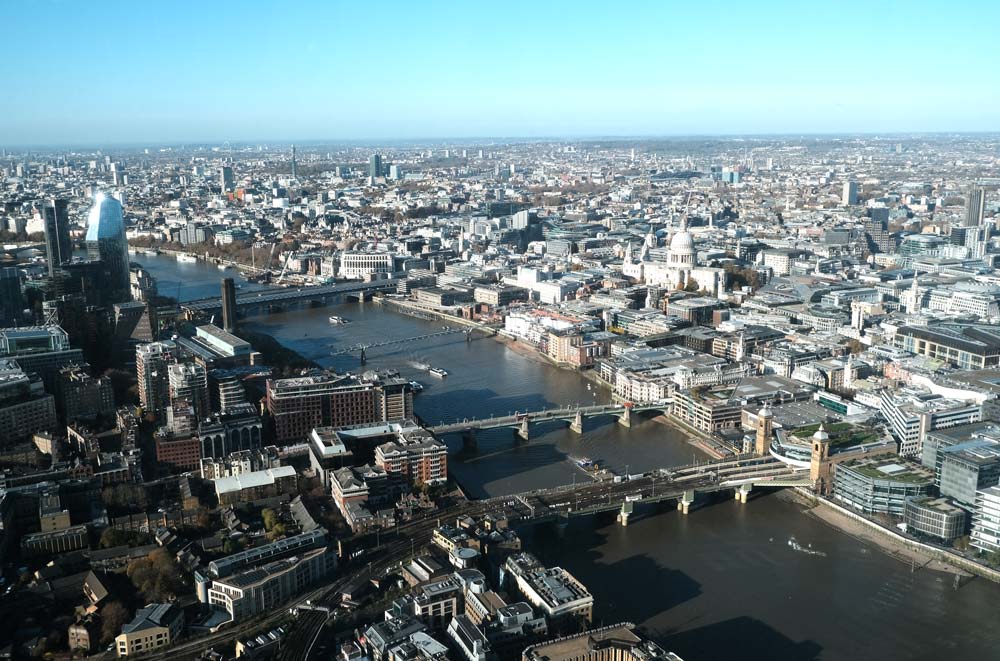
Famous London Bridges at a Glance
My favourite bridges in London
Other famous bridges in London
Travelling from east to west, these are London’s most well-known bridges. Not all of them are beauties, but what some lack in aesthetics, they make up for in history.
The opening date refers to the latest incarnation (many of these bridges replaced earlier structures). I’ve also included nearby attractions and information on public transport options.
Tower Bridge
Date opened: 1894
Not only the most famous bridge in London but one of the most famous bridges in the world, Tower Bridge is an icon of the capital itself.
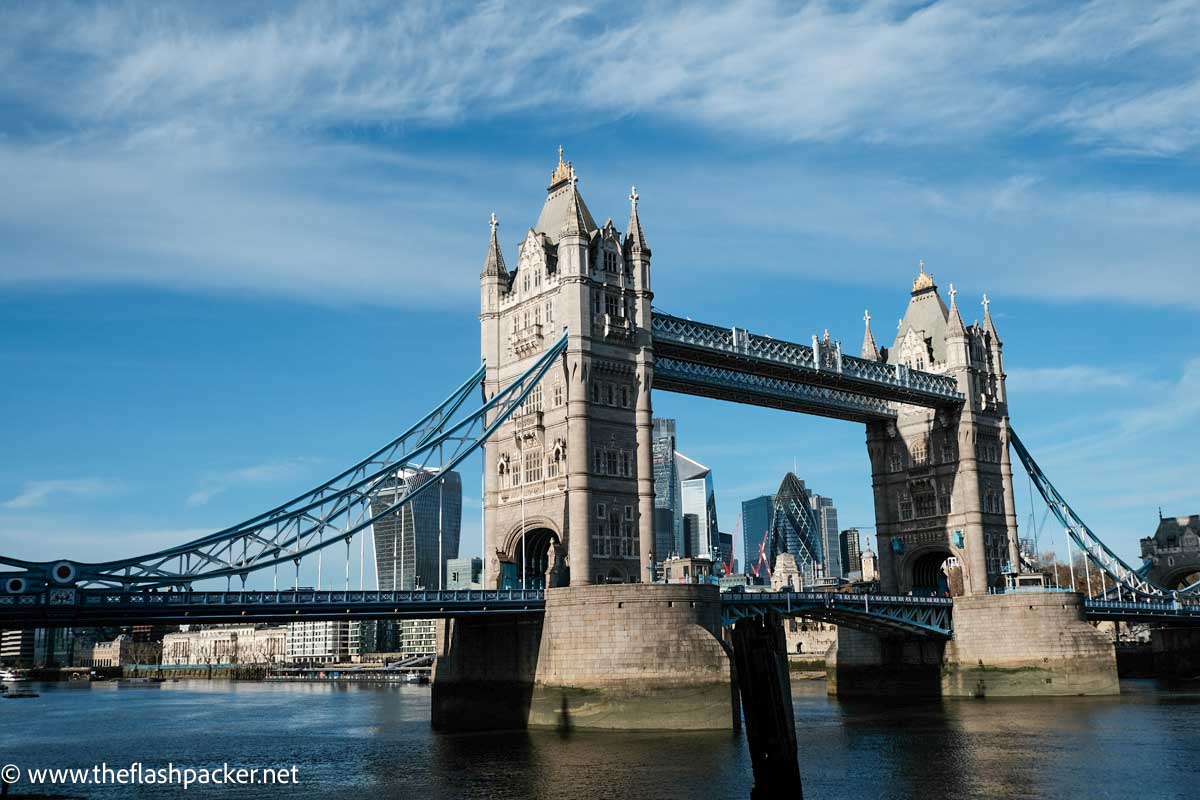
Hewn from Cornish granite and Portland stone, this Victorian bridge was built to ease road traffic congestion whilst retaining access to this important stretch of the river.
Unlike the other bridges across the Thames, Tower Bridge was designed as a drawbridge and suspension bridge. This means that the middle section of the bridge can be raised to allow river traffic to pass through.
Tower Bridge is particularly beautiful when it is lit up at night.
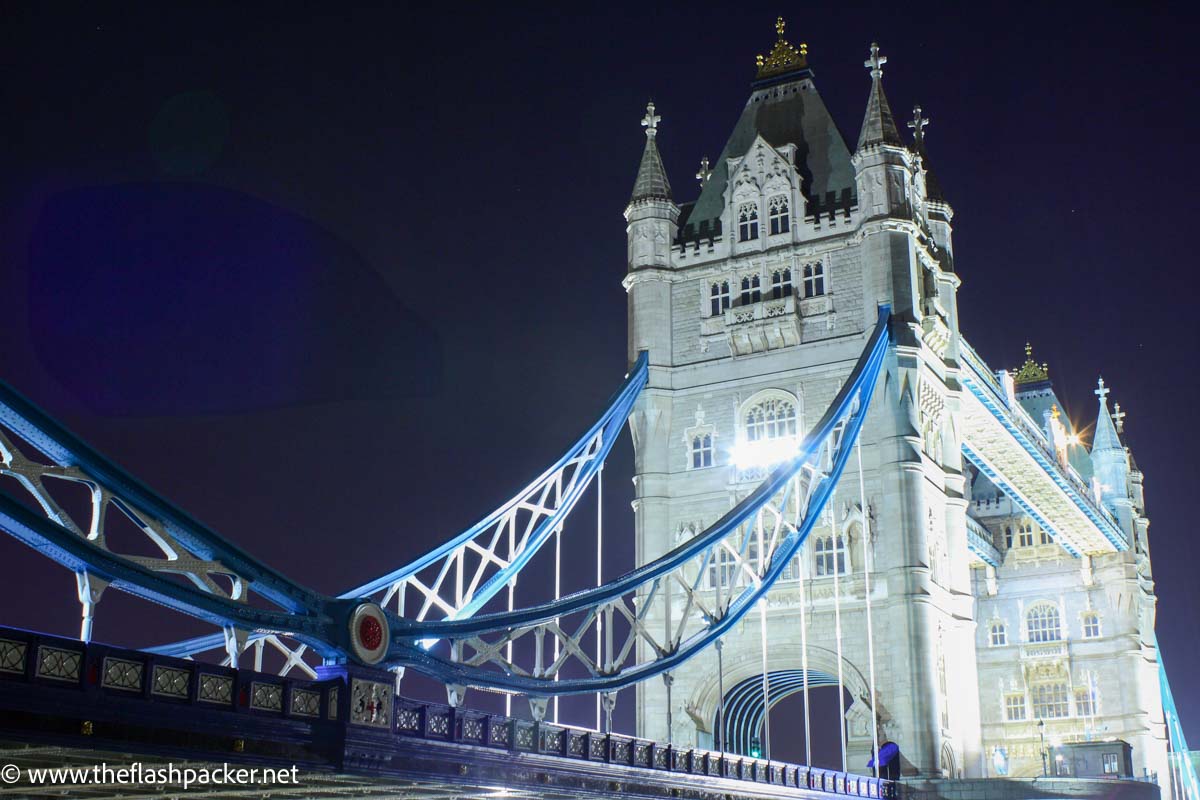
For a fun activity and to learn more about this unique London bridge, buy a ticket for the Tower Bridge Experience.
Nearby attractions: The Tower of London is at the northern end of Tower Bridge
Closest Tube station: Tower Hill
London Bridge
Date opened: 1973
Immortalised through the nursery rhyme London Bridge is Falling Down, this bridge is nowhere near as showy as its neighbour.
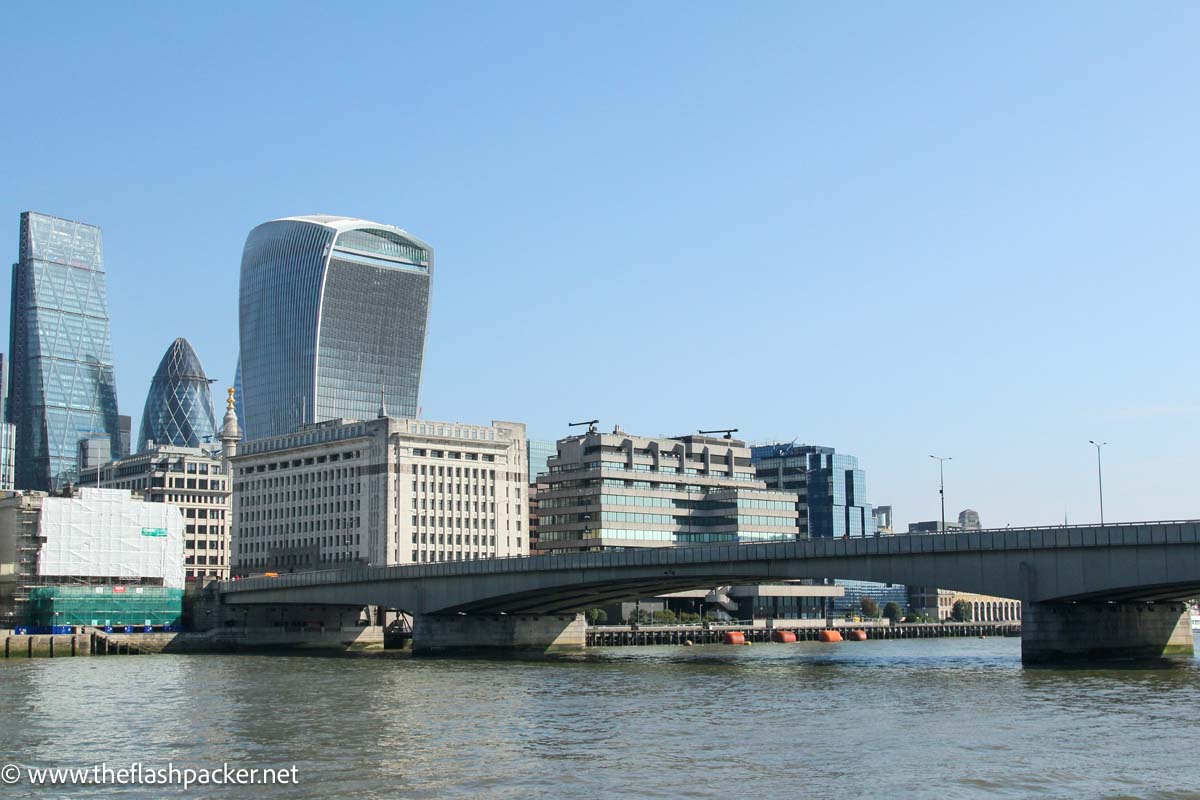
There has been a bridge here since 50 AD when the Romans occupied London (this was the only bridge across the Thames until Westminster Bridge first opened in 1750).
Later incarnations included a medieval bridge with houses on top and a stone bridge commissioned by Henry II. In 1971, the Victorian London Bridge was bought for £1m by the McCulloch Oil Company in the US as a tourist attraction for the new Lake Havasu City in Arizona.
Nearby attractions: The pointy splendour of The Shard is close by as is Borough Market, a good place to try some of London’s tastiest foods. On the north side of the river, it’s a short walk to the Sky Garden at the Walkie-Talkie building.
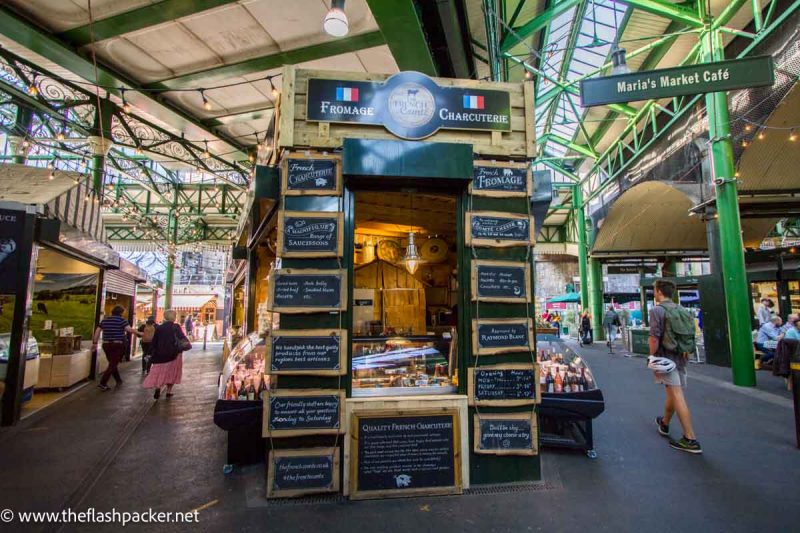
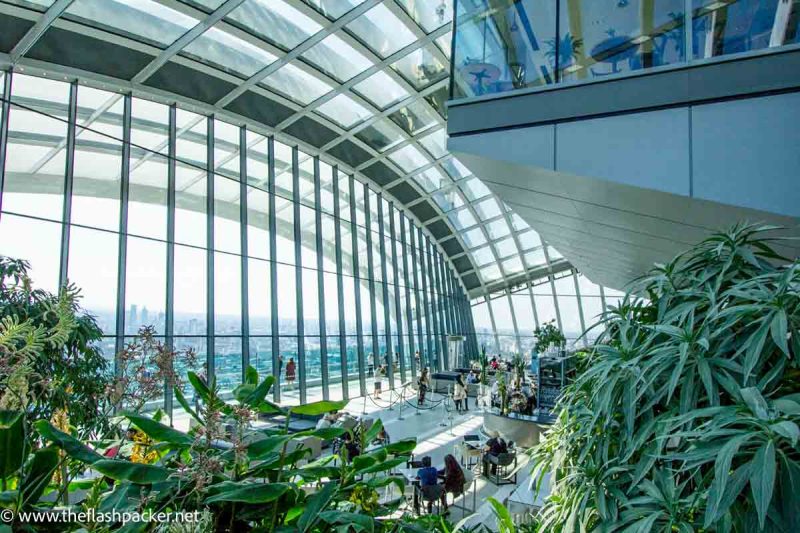
Closest Tube station: London Bridge or Monument
Southwark Bridge
Date opened: 1921
Linking the City of London with Southwark on the south bank of the Thames, the Grade II-listed Southwark Bridge comprises five steel arches across granite piers, painted green and yellow.
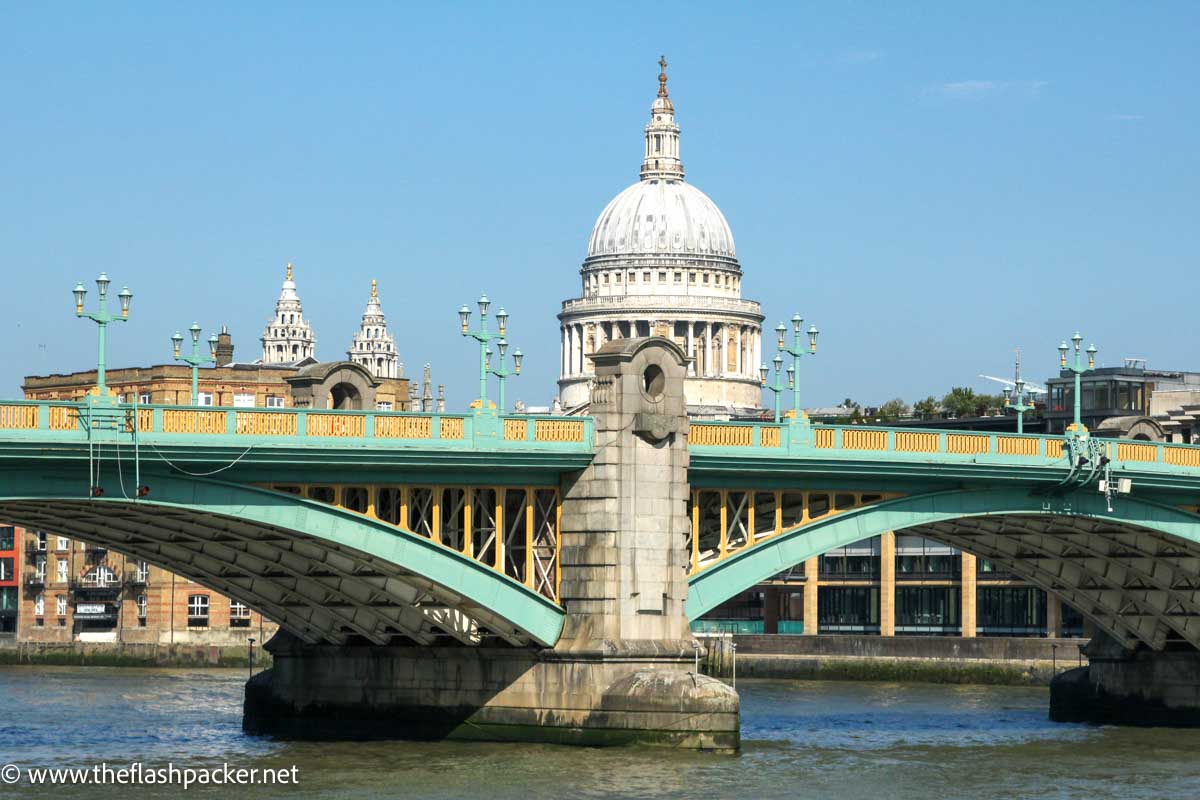
Don’t miss the mural on the pedestrian tunnel on the south side of the bridge, depicting scenes of Thames frost fairs. A common occurrence between the 17th and 19th centuries, Londoners enjoyed festivals on the frozen waters of the Thames.
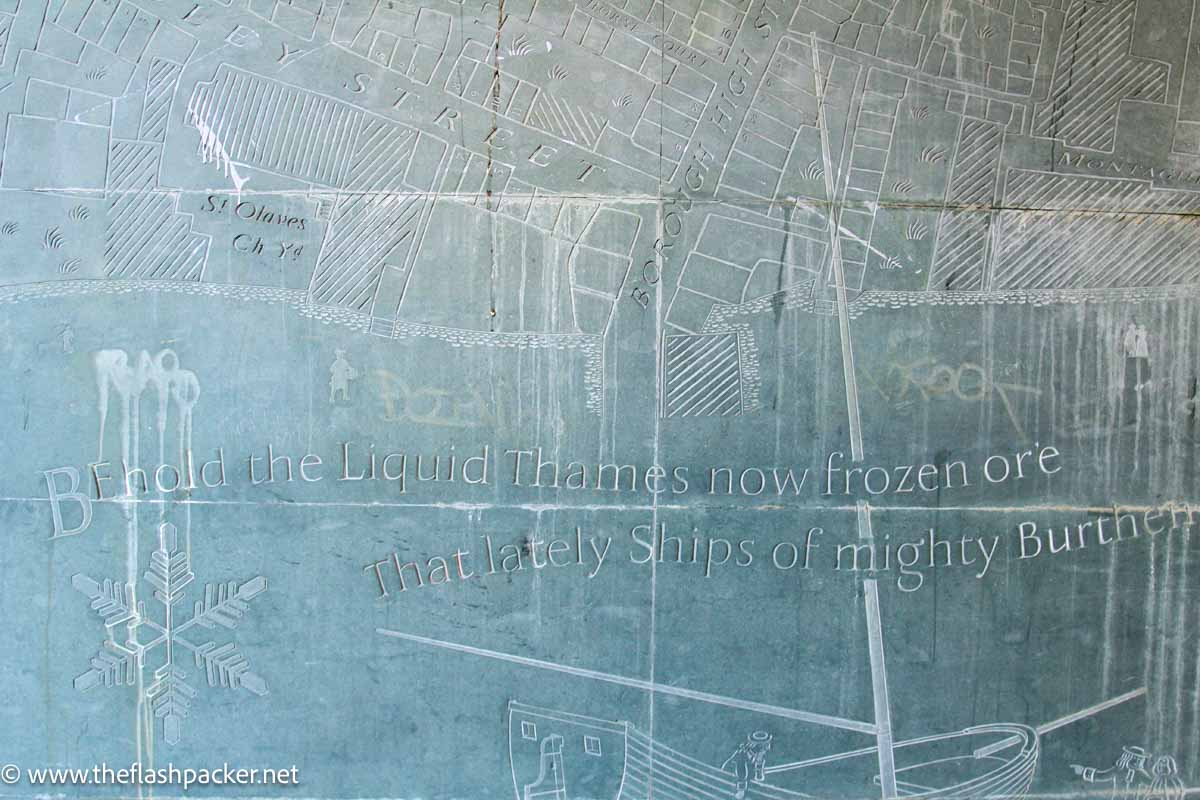
Nearby attractions: The London Mithraeum (Temple of Mithras) in the City is a short walk. On the South Bank, there’s Shakespeare’s Globe Theatre.
Closest Tube station: Cannon Street
Millennium Bridge
Date opened: 2002
Linking Tate Modern with St. Paul’s Cathedral, the Millennium Bridge is a striking steel suspension footbridge with a chequered history.
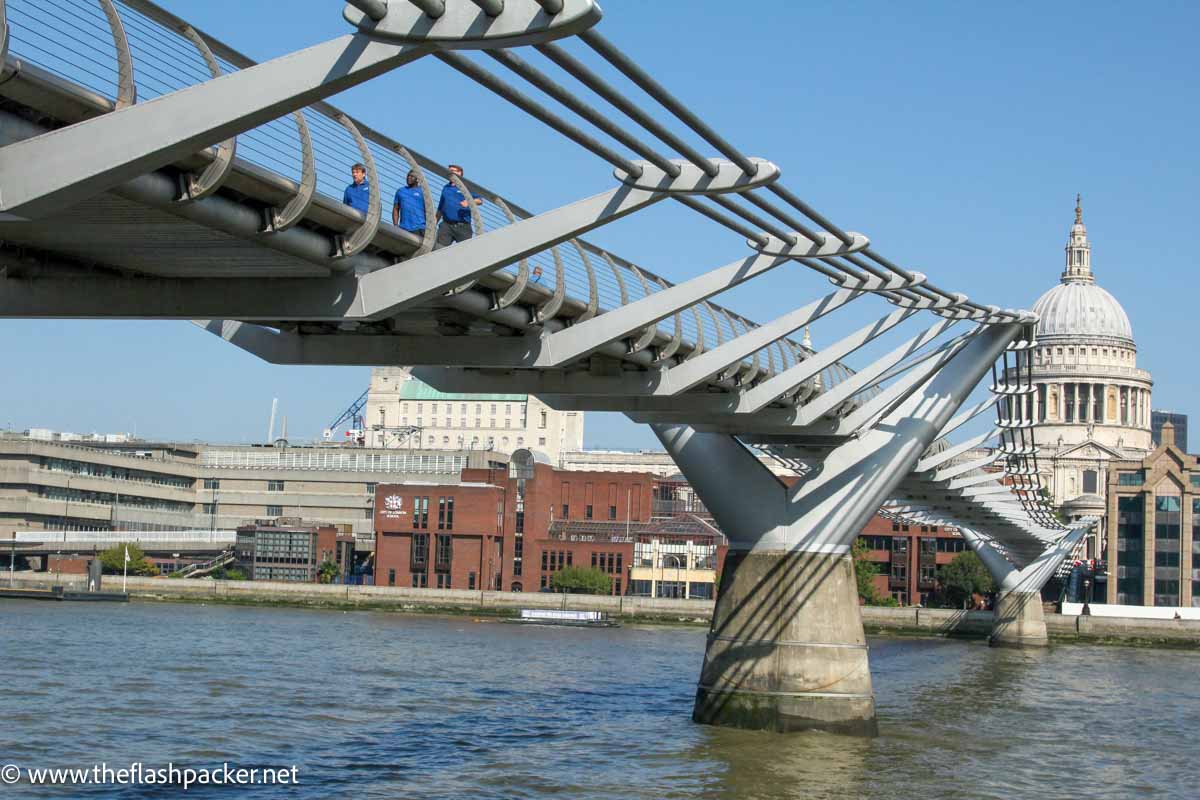
Opened to great fanfare in 2000, eager visitors swarmed over its shiny new deck, resulting in an alarming sway. Although there was no chance that the bridge would tumble down, the Millennium Bridge was quickly closed for remedial work, reopening in June 2002.
To this day, many Londoners refer to the Millennium Bridge as the Wobbly Bridge, although the wobble has long since gone.
The thing that makes the Millennium Bridge so extraordinary is its alignment. Stand at its southern end at Tate Modern and you’re treated to a wonderful view of the south façade of St. Paul’s Cathedral, framed by the bridge supports.
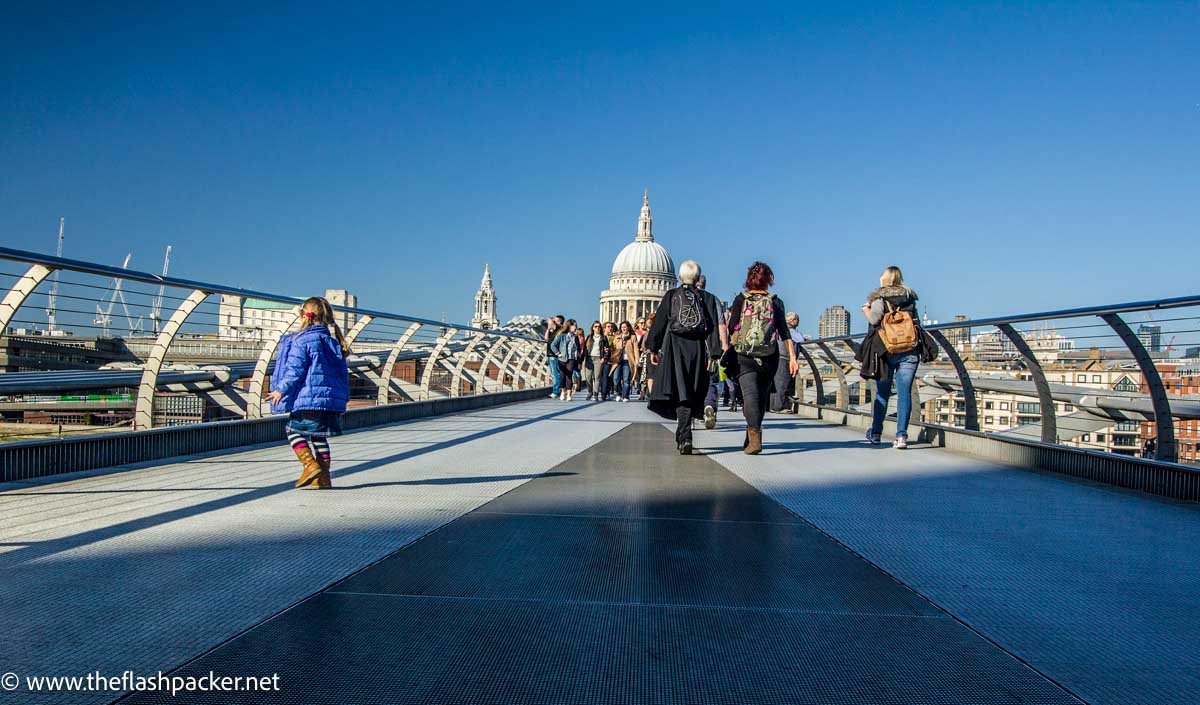
Nearby attractions: St Paul’s Cathedral is at the northern end of the bridge. Tate Modern and Shakespeare’s Globe Theatre are at the bridge’s southern end.
Closest Tube stations: St. Paul’s, Southwark, Borough or London Bridge
Blackfriars Railway Bridge
Date opened: 1886
Originally called St. Paul’s Bridge, Blackfriars Railway Bridge was designed by John Wolfe-Barry, who was also the architect behind Tower Bridge, and Henry Marc Brunel, second son of Isambard Kingdom Brunel.
This is the second bridge to bear this name. The series of red columns sticking out of the river are a visible reminder of the first Blackfriars Bridge, which was opened in 1864.
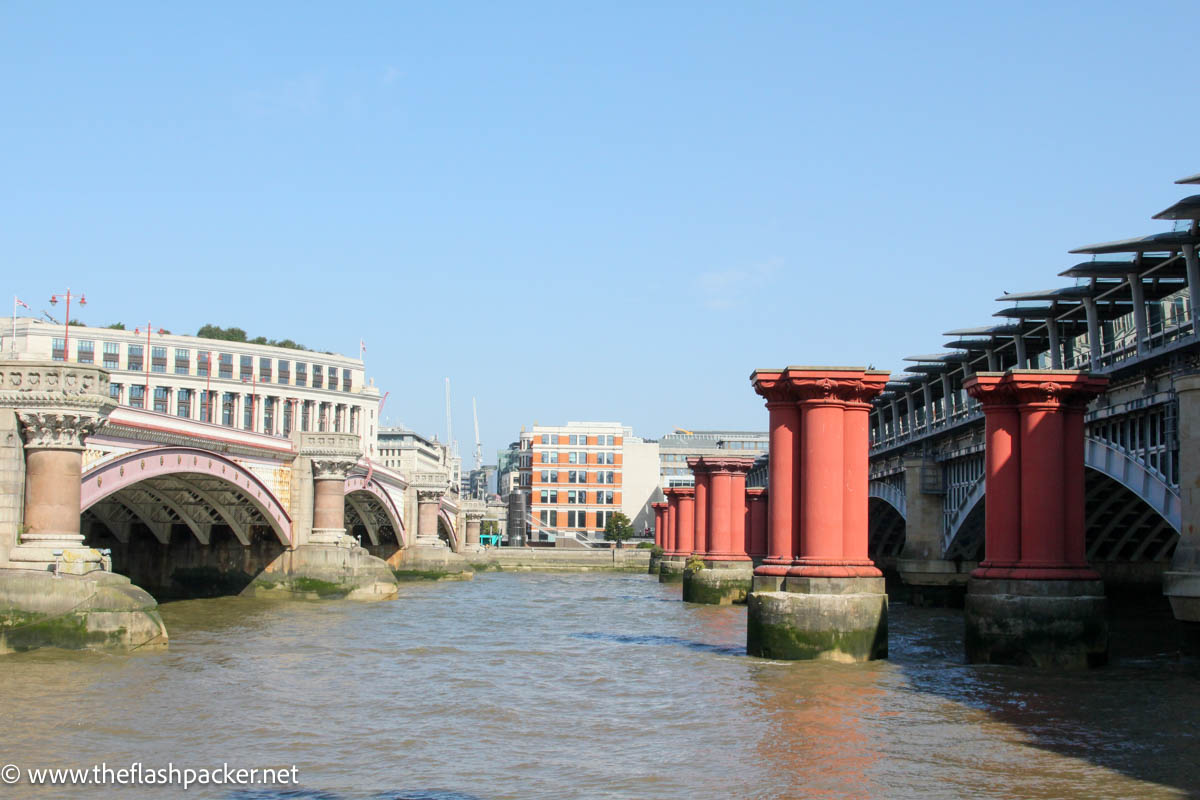
Nearby attractions: Tate Modern and Shakespeare’s Globe are at the bridge’s southern end.
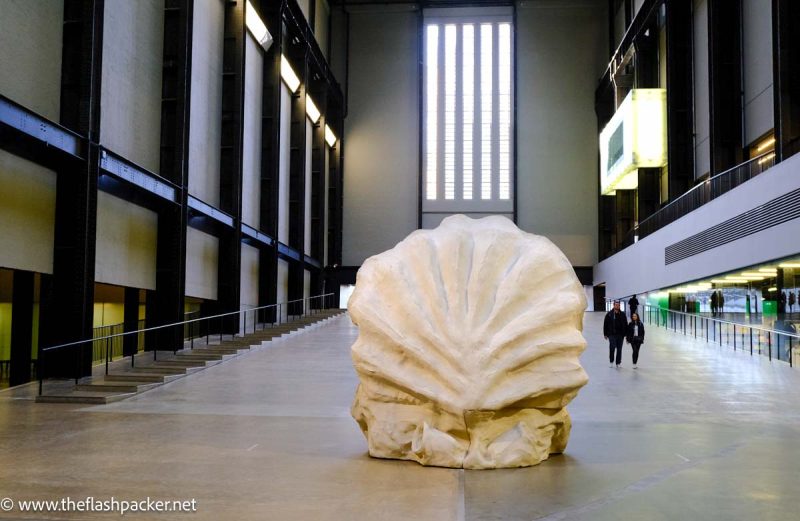
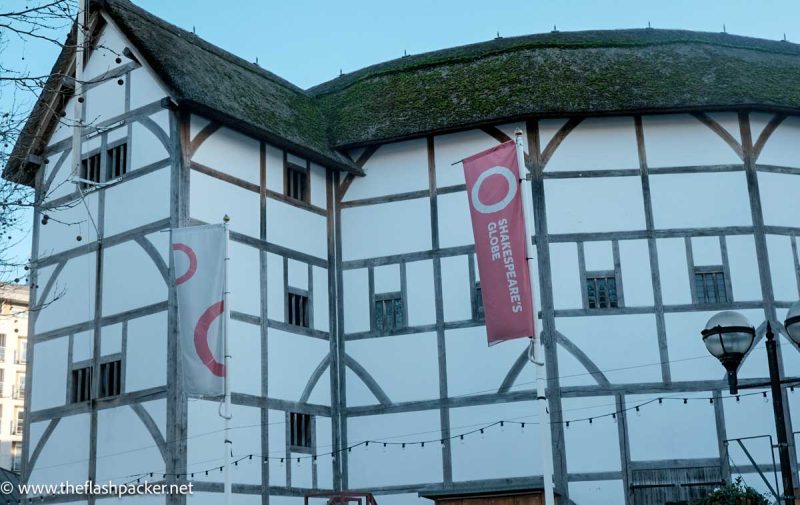
Closest Tube station: Blackfriars
Waterloo Bridge
Date opened: 1945
At 1,230 feet in length, Waterloo Bridge is the longest bridge in London and was also the first to incorporate electric lights.
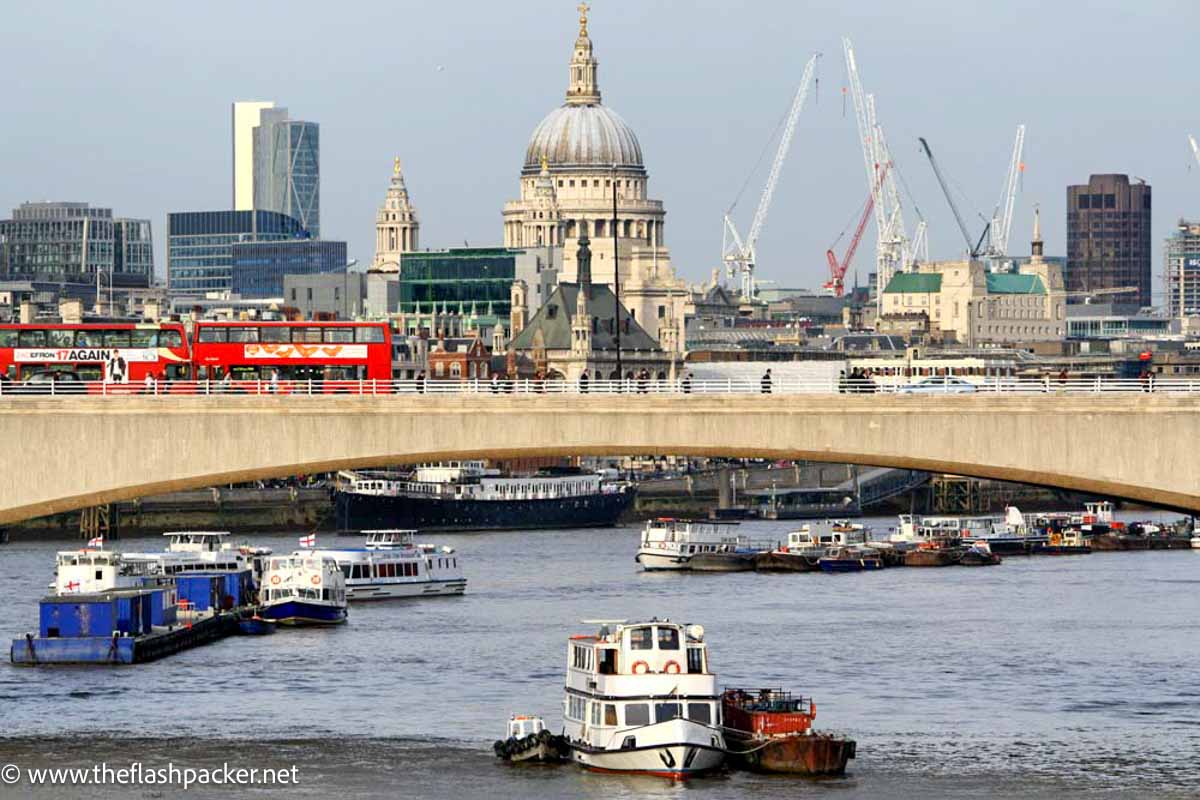
Replacing an earlier 1817 bridge, this Grade II listed reinforced concrete bridge was designed by the great Giles Gilbert Scott, the architect behind Bankside Power Station (now housing Tate Modern), Battersea Power Station and the iconic red telephone boxes.
Thanks to its location at a bend in the river, Waterloo Bridge affords some of the best views of London, to Westminster and the Palace of Westminster in the west and downstream to the City of London and Canary Wharf.
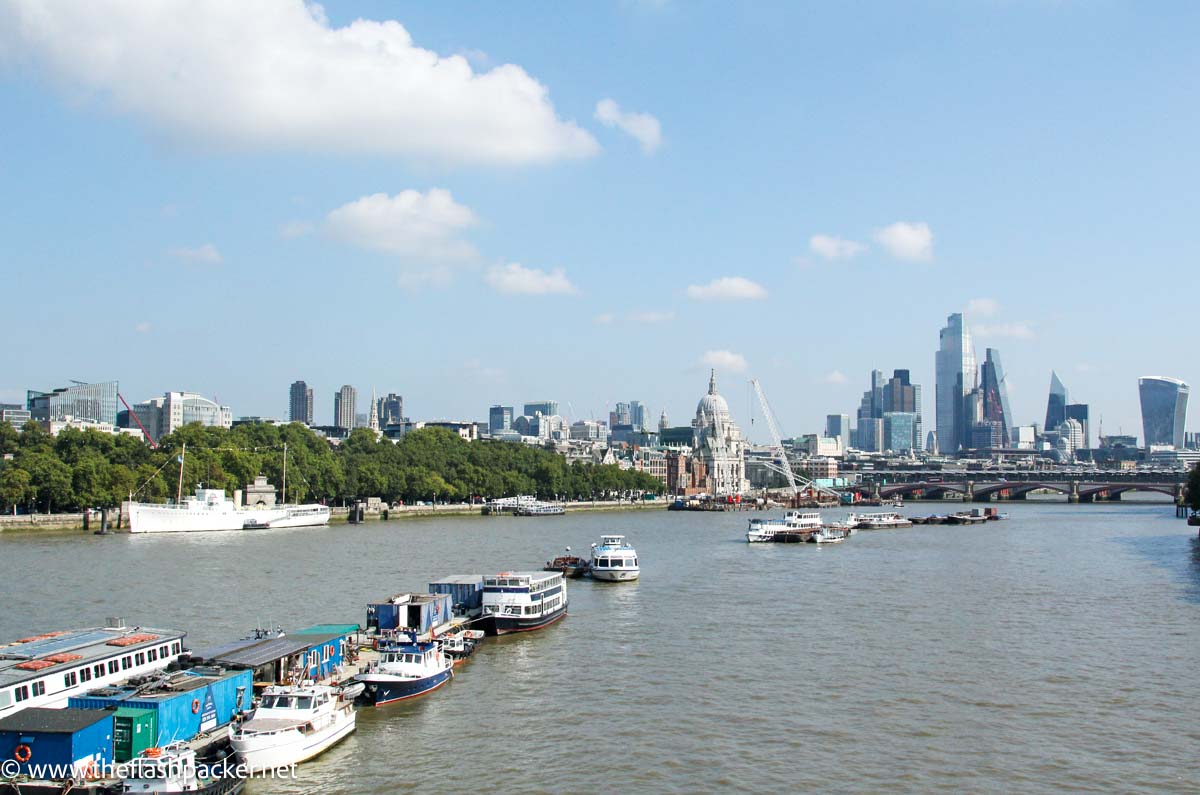
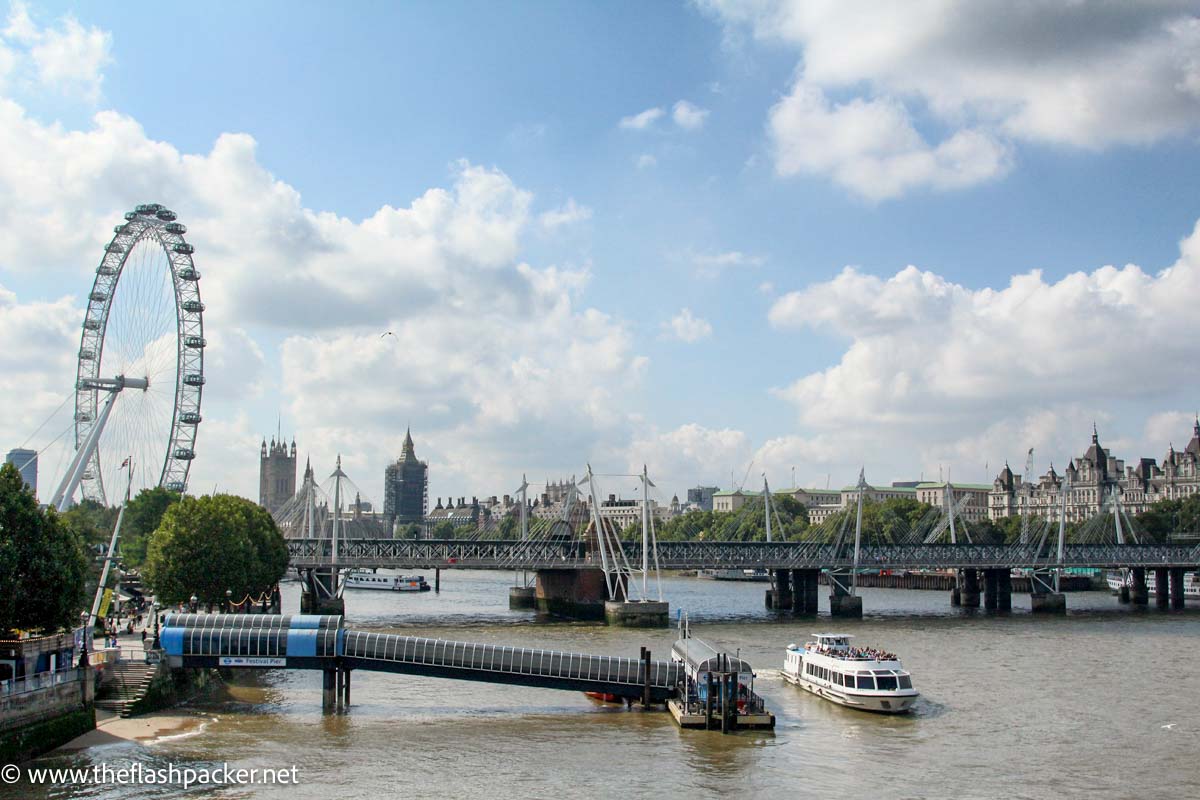
Don’t miss the South Bank Book Market, tucked under Waterloo Bridge. Open daily from 10 am until 7 pm, come rain or shine, sellers display their wares, from classics & contemporary titles to maps & prints, on long tables.
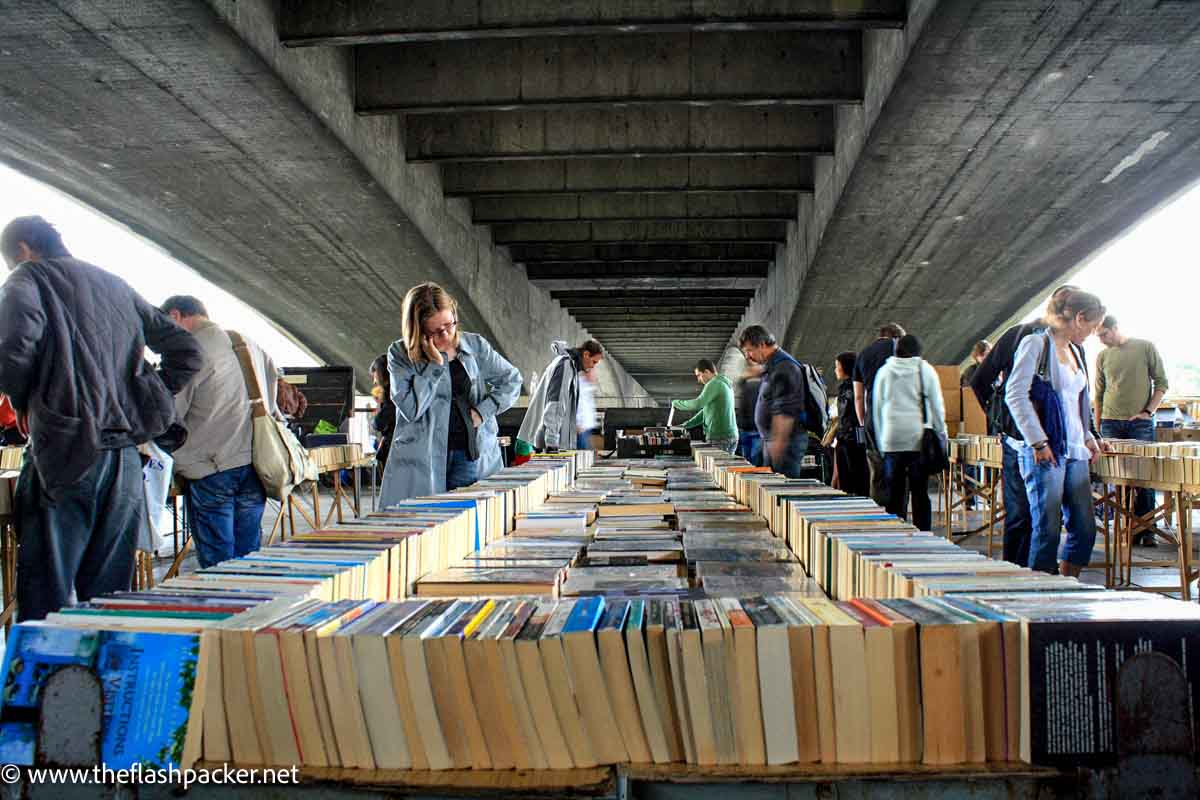
Nearby attractions: Somerset House is on the north side of The Thames, and the cultural attractions of the National Theatre, the British Film Institute and the Royal Festival Hall are on the South Bank.
Closest Tube station: Waterloo Station
Hungerford Bridge & Golden Jubilee Bridges
Date opened: 1864 and 2002
Three bridges at one location at this point in the Thames.
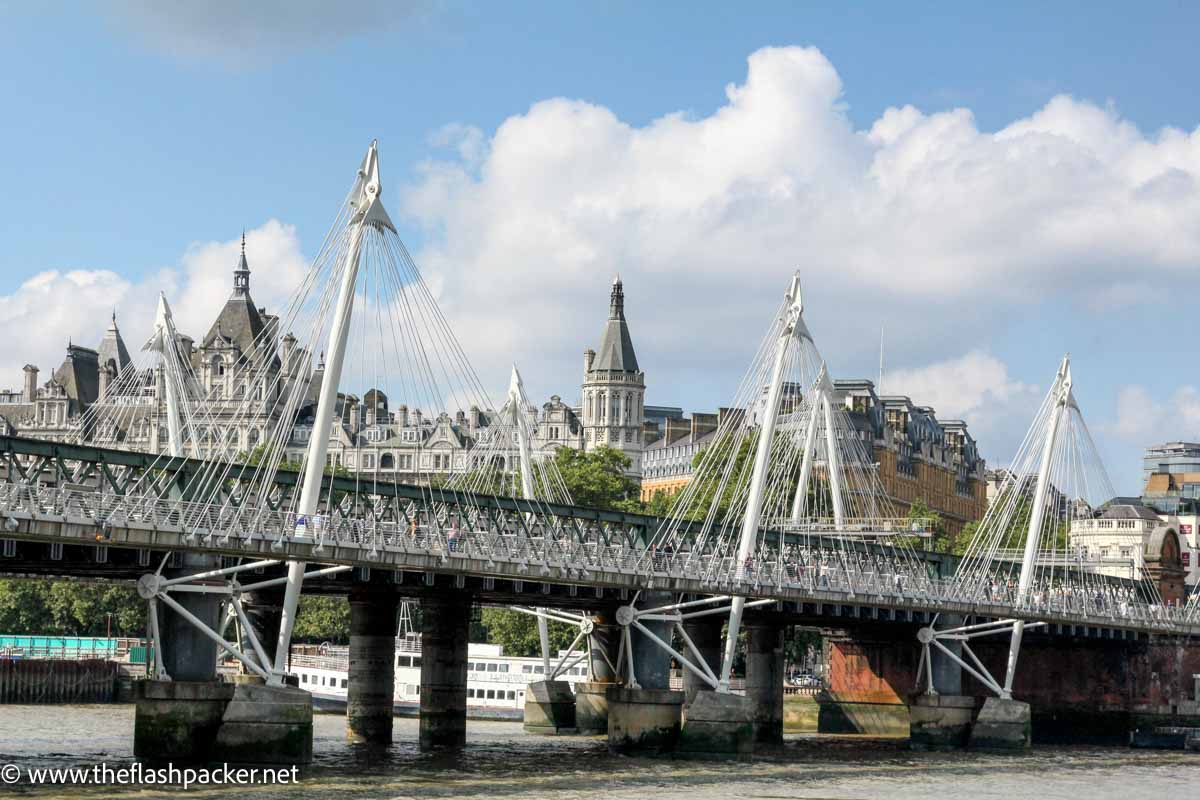
Initially designed by Isambard Kingdom Brunel as a footbridge to connect Hungerford Market to a steamer pier on the south bank, Hungerford Bridge was rebuilt as a steel truss railway bridge that terminates at Charing Cross station. All that remains of Brunel’s original bridge are its stone buttresses.
Flanking Hungerford Bridge are the two 15-foot-wide cable-stayed Golden Jubilee pedestrian bridges.
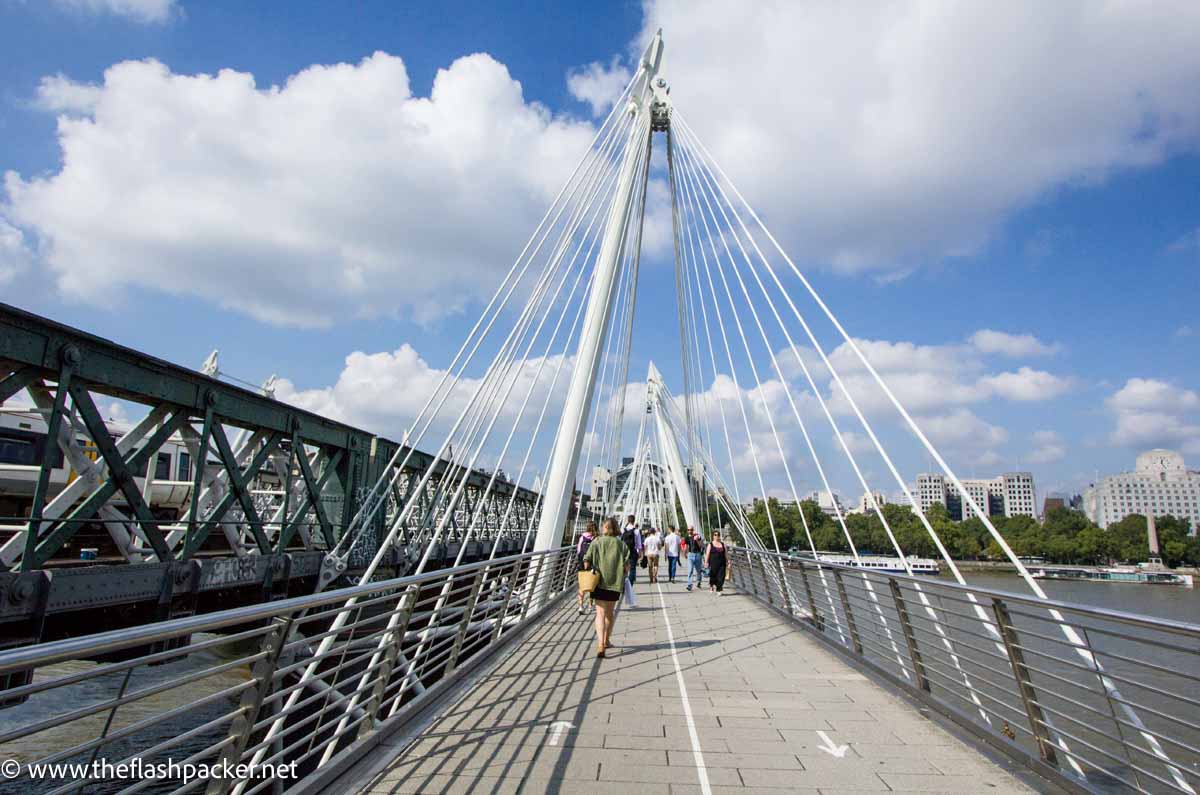
Looking east along the river from Hungerford Bridge is another of my favourite views from London’s bridges.
Nearby attractions: North of these bridges are Trafalgar Square and the National Gallery. At their opposite end are London’s South Bank and the London Eye.
Closest Tube station: Embankment Station
Westminster Bridge
Date opened: 1862
Designed by engineer Thomas Page with a little help from Sir Charles Barry, the arches of Westminster Bridge are painted green to match the seats in the House of Commons.
This is one of the most photographed bridges in London for very good reasons. It’s close to the Gothic splendour of the Palace of Westminster and Big Ben, and the views it affords are amongst the best in London, particularly as the sun starts to set.
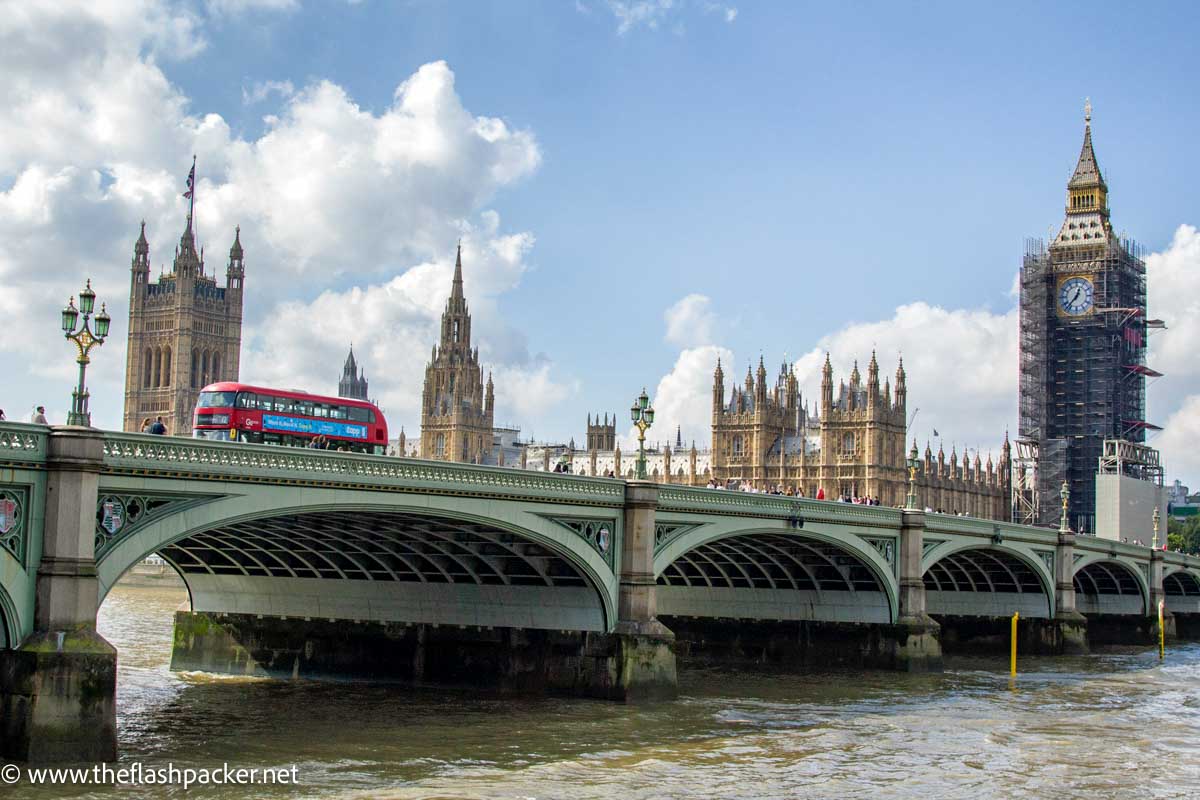
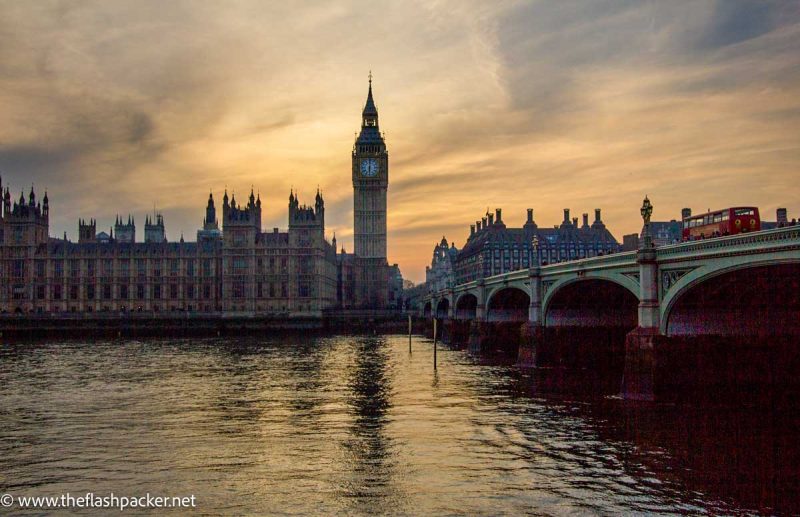
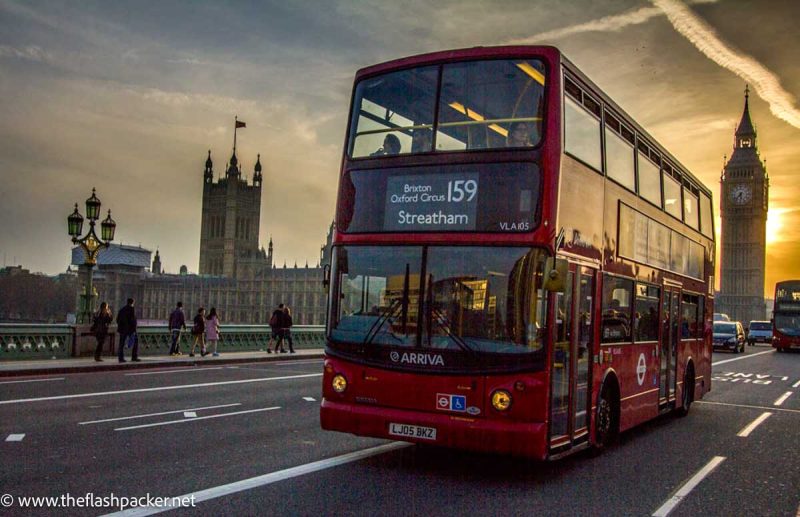
Nearby attractions: Big Ben and the Houses of Parliament are on the north side of the bridge. London’s South Bank continues on the opposite side of the river.
Closest Tube station: Westminster Station
Lambeth Bridge
Date opened: 1932
With its arches painted red to match the seats in the House of Lords, Lambeth Bridge connects the Palace of Westminster with Lambeth Palace, the home of the Archbishop of Canterbury, England’s most senior clergyman.
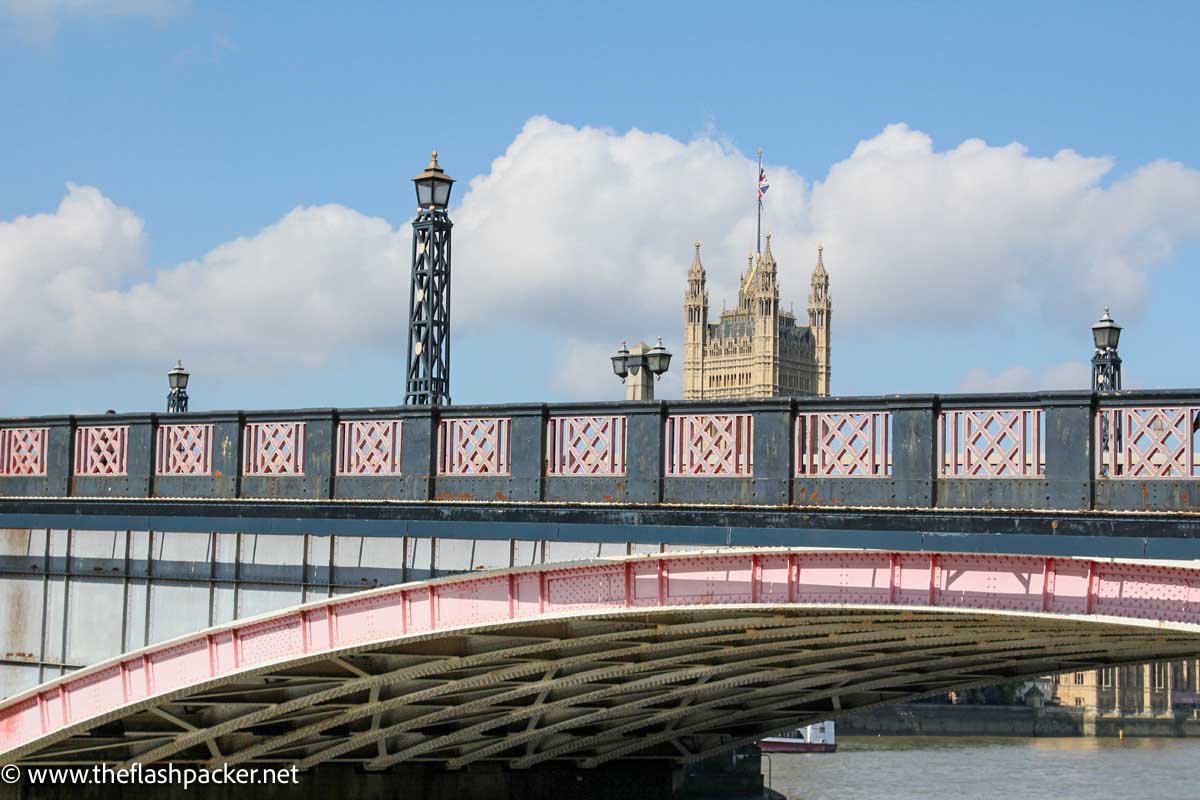
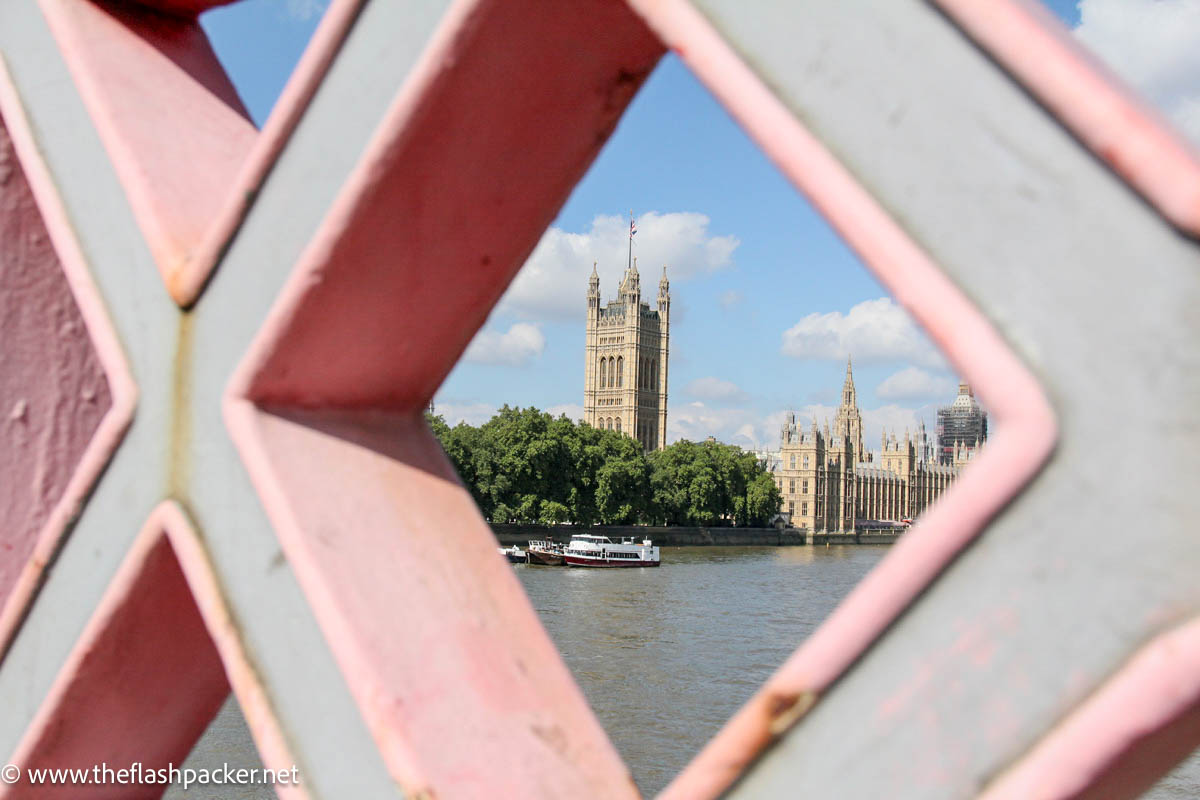
Look carefully at the decorative obelisks at either end of the bridge. There is debate as to whether these are topped by pineapples or pinecones.
The pineapple theory came about as a result of John Tradescant the Younger, the Keeper of His Majesty’s Garden in the 17th Century, cultivating the first pineapple to be grown on British soil. As for the pinecone theory, this is because they are considered an ancient symbol of hospitality.
Nearby attractions: Lambeth Palace and the Garden Museum on the south bank of the river.
Closest Tube stations: Westminster Station or Lambeth North Station.
Vauxhall Bridge
Date opened: 1906
The red and yellow steel and granite arch Vauxhall Bridge links Pimlico on the north bank of the Thames with Vauxhall on the south bank.
Whilst this is not one of London’s most beautiful bridges, the devil is in the detail. Vauxhall Bridge is decorated with enormous bronze statues, one of which has a miniature scale model of St Paul’s Cathedral.
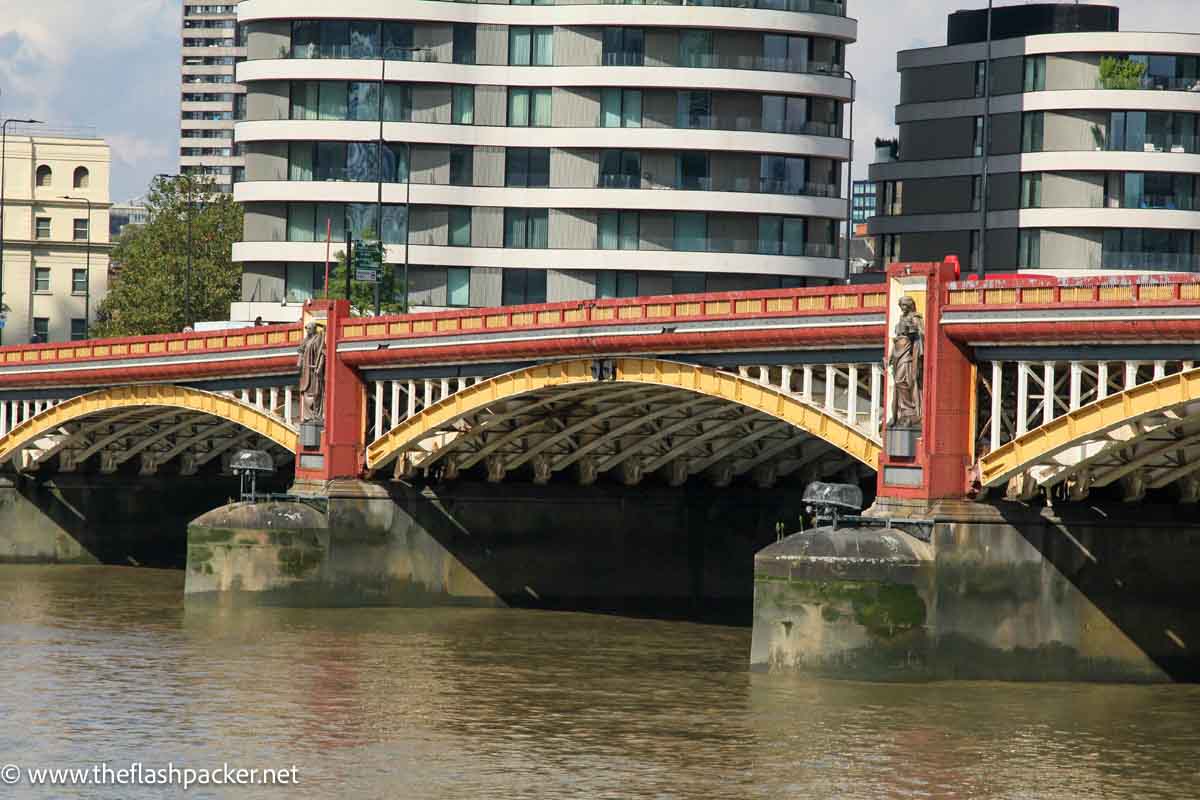
Nearby attractions: Tate Britain art gallery
Closest Tube station: Vauxhall interchange at the southern end of the bridge and Pimlico on the north bank of the Thames
Chelsea Bridge
Date opened: 1937
One of London’s prettiest bridges, Chelsea Bridge links Battersea on the south bank of the river to Chelsea on the north bank.
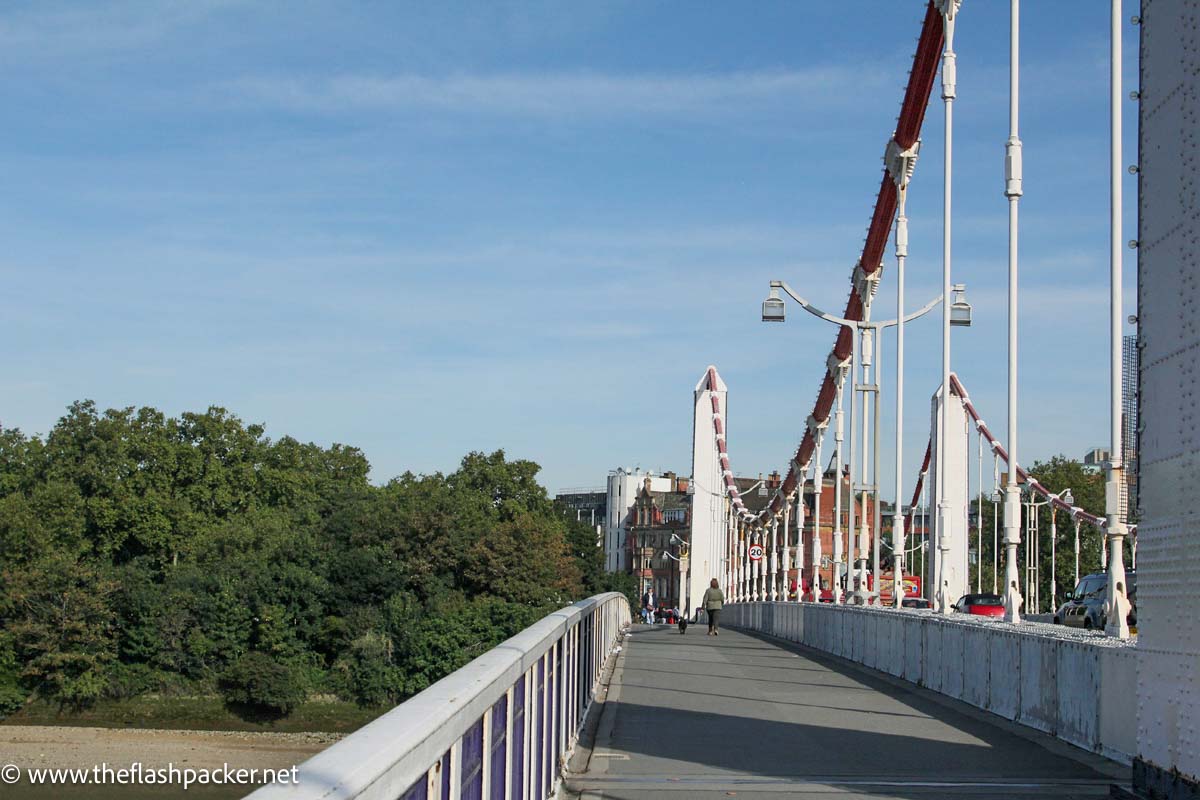
This is where Julius Caesar first crossed the Thames during the 54 BC Roman invasion of Britain. Reconstruction work in the late 19th Century unearthed a treasure trove of Roman and Celtic weapons, and human skulls.
Nearby attractions: Battersea Park with its boating lake, the London Peace Pagoda, and Children’s Zoo. The bars, restaurants and cultural venues are housed within the iconic former Battersea Power Station.
The National Army Museum and Cheyne Walk, one of London’s most historic streets, are at its northern end.
Closest Tube stations: Battersea Power Station or Sloane Square
Albert Bridge
Date opened: 1873
With its exquisite wrought ironwork, Albert Bridge is one of London’s most beautiful bridges. It is particularly stunning at night when its 4000 halogen bulbs sparkle in the water.
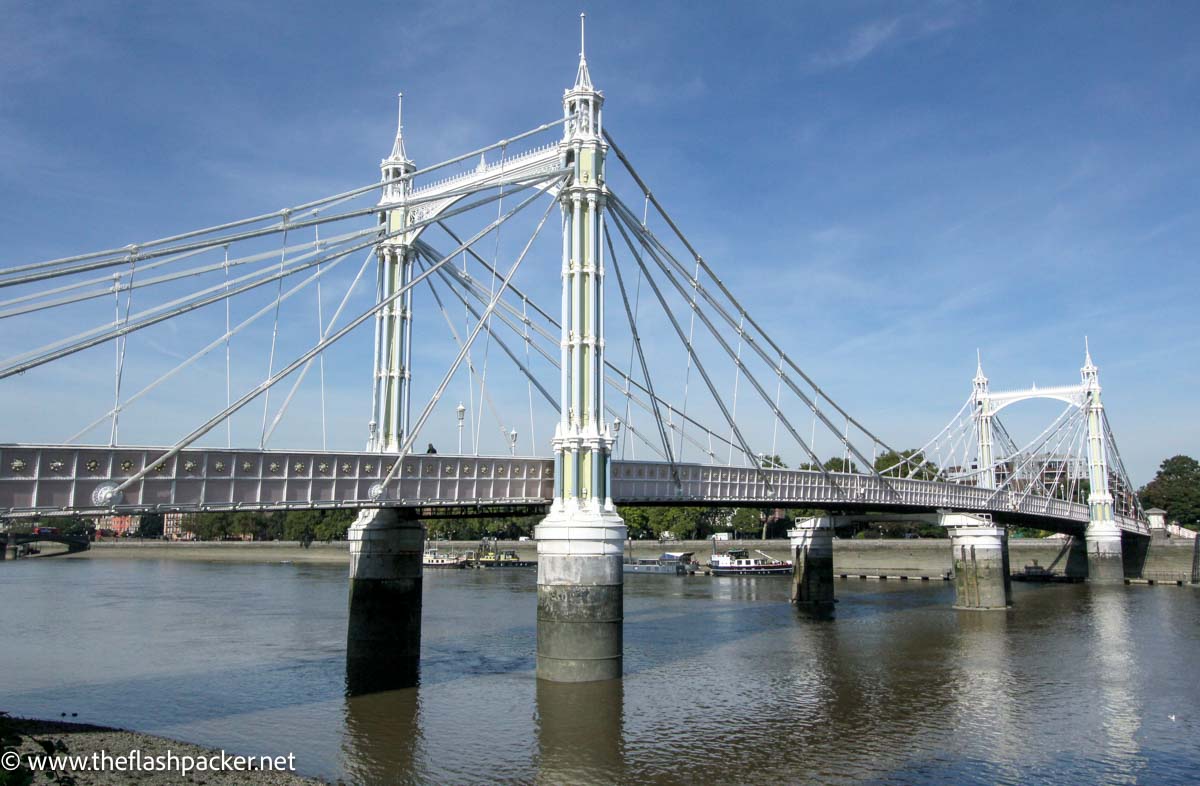
Named after Queen Victoria’s consort, Prince Albert, this was originally a toll bridge and its octagonal tollbooths are the last remaining ones in London.
Albert Bridge was also London’s original Wobbly Bridge. Prone to shaking when there were a lot of pedestrians crossing. it became known as ‘The Trembling Lady.’
Marching troops from nearby Chelsea Barracks caused the most headaches and the local authority put up signs requesting “All troops must break step when marching over this bridge”.
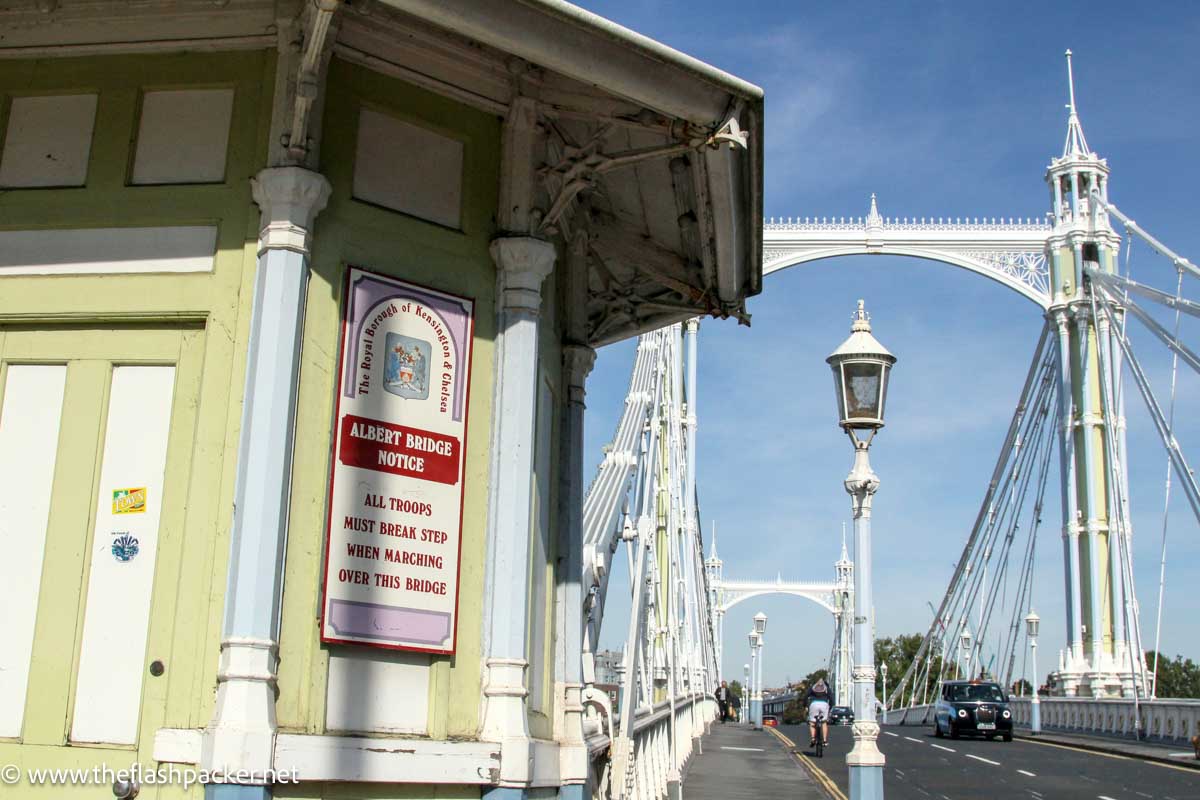
Nearby attractions: Chelsea Physic Garden which is London’s oldest botanical garden.
Closest Tube stations: Sloane Square or South Kensington are a 20-minute walk from Albert Bridge
Battersea Bridge
Date opened: 1890
Replacing the last wooden bridge on the Thames, Battersea Bridge is the narrowest road bridge over the river. Designed by Joseph Bazalgette, this Grade II listed London bridge connects Battersea with Chelsea.
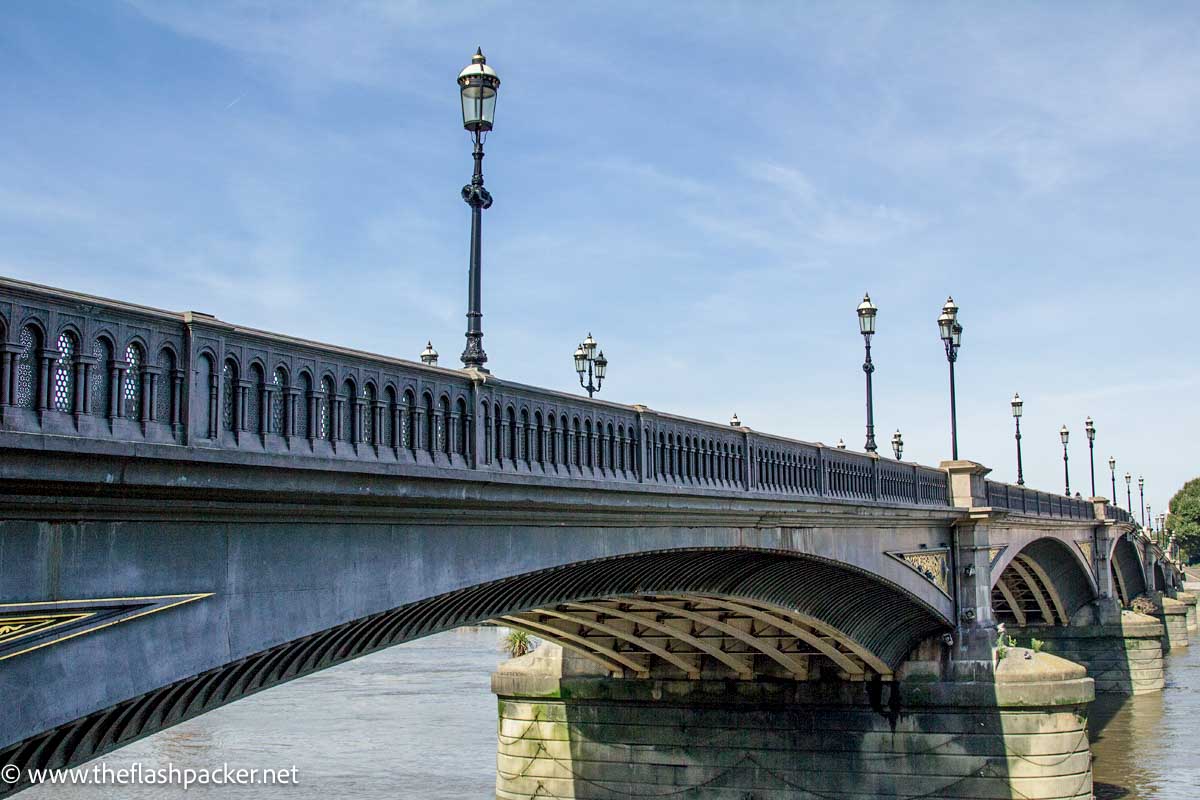
Nearby attractions: Battersea Park
Closest Tube station: Fulham Broadway, Battersea Power Station or Battersea Park
Putney Bridge
Date opened: 1886
The stone and Cornish granite arch bridge is the second oldest in London after London Bridge and was designed by Sir Joseph Bazalgette. It replaced the earlier wooden Putney Bridge which was built in 1729.
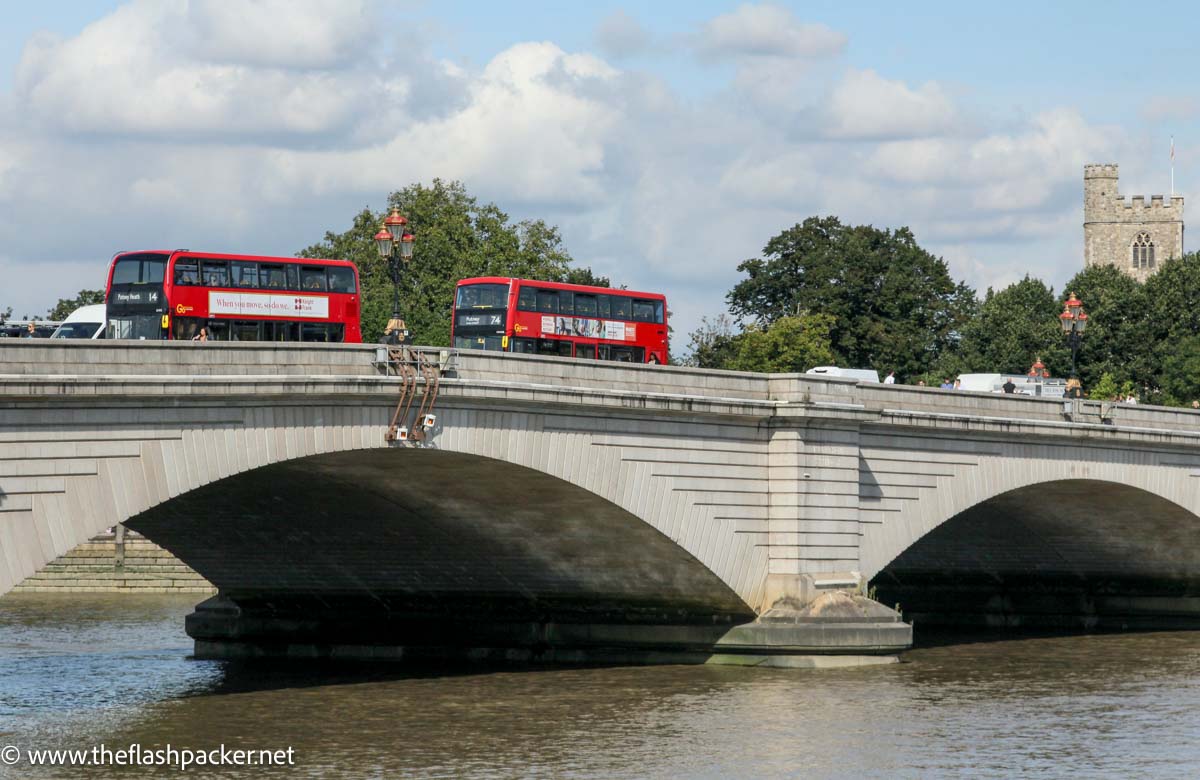
As the starting point for the annual Boat Race between Oxford and Cambridge University, this is one of the most famous bridges in London. The stone marker for the race’s start line is about 400 feet upstream of Putney Bridge.
Nearby attractions: Fulham Palace and its park
Closest Tube station: Putney Bridge
Hammersmith Bridge
Date opened: 1887
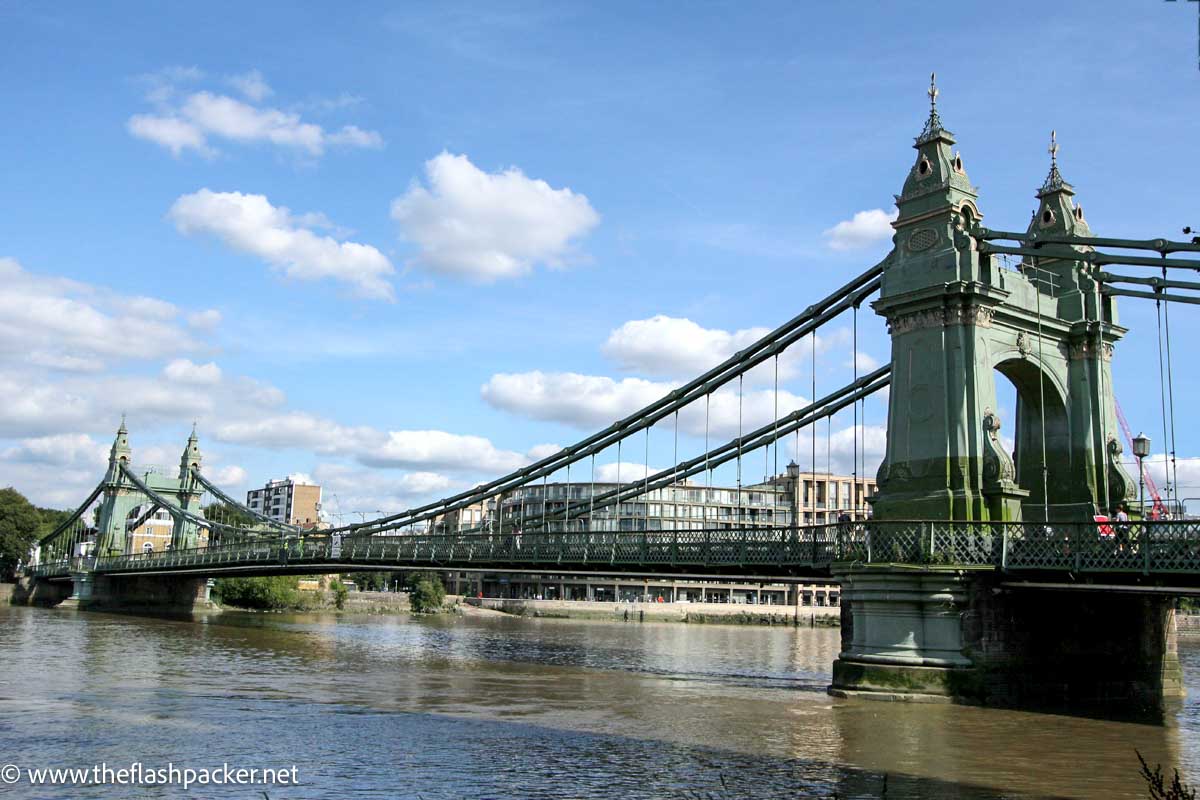
Under threat for many years due to fears of its collapse, Hammersmith Bridge has been given a reprieve. Following extensive works, it reopened to pedestrians and cyclists in July 2021.
Another part of Bazalgette’s architectural legacy, an earlier 1827 bridge at this location was the first suspension bridge over The Thames.
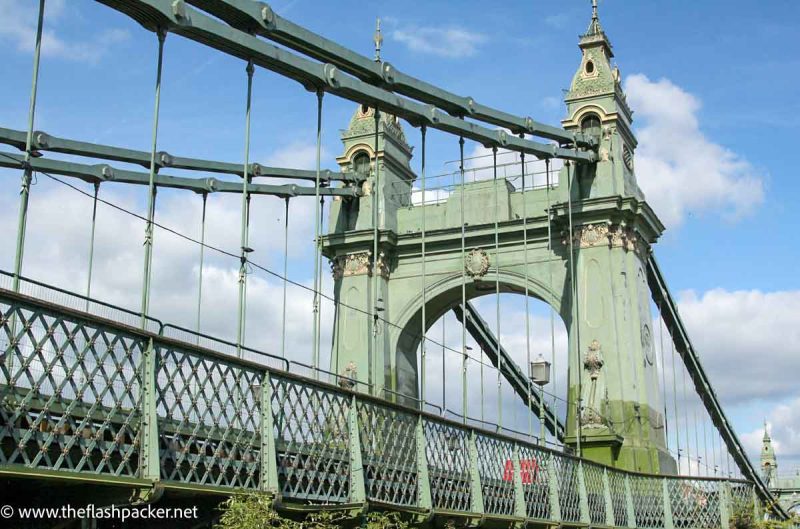
Nearby attractions: The lovely London Wetland Centre at Barnes
Closest Tube station: Hammersmith
Chiswick Bridge
Date opened: 1933
Made from reinforced concrete, it’s fair to say that this is not the prettiest bridge in London.
However, Chiswick Bridge is famous as the finish point of the Boat Race. The exact finish point is indicated by a stone marker about 370 feet downstream of the bridge.
Nearby attractions: Chiswick House and Gardens
Closest stations: Mortlake or Chiswick mainline railway stations
Kew Bridge
Date opened: 1903
This handsome granite bridge is the third to link Kew, on the south bank of the Thames, with Brentford on the north bank.
In 1759, George III took the inaugural trip over the original toll bridge when he was Prince of Wales. Proving costly to maintain, a second bridge was greenlit and was designed by John Paine, the architect responsible for Richmond Bridge.
However, the second bridge couldn’t cope with the volume of traffic and today’s Kew Bridge was opened in 1903 as the King Edward VII Bridge.
Nearby attractions: The wonderful Kew Gardens
Closest station: Kew Bridge mainline railway station
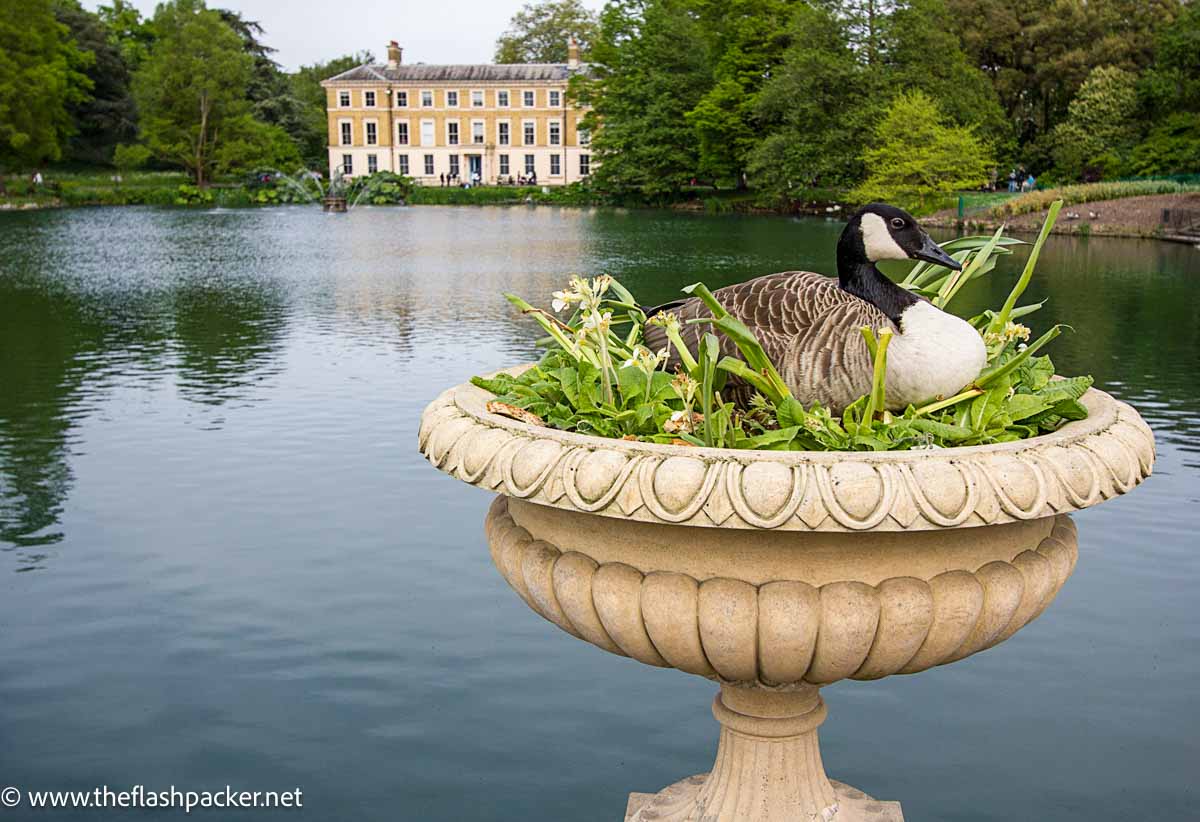
Twickenham Bridge
Date opened: 1933
Connecting Twickenham, on the north bank of the river, with Richmond on the south bank, Twickenham Bridge was designed by Maxwell Ayrton, the architect behind the original Wembley Stadium. It is the oldest surviving bridge across the Thames in London.
It features three reinforced concrete arches with Art Deco flourishes and was innovative in its inclusion of hinges allowing the structure to adjust to changes in temperature.
Nearby attractions: Twickenham Stadium, the home of England Rugby.
Closest stations: St Margarets mainline railway station or Richmond (Tube and mainline)
Richmond Bridge
Date opened: 1777
Located on a beautiful stretch of the river, the elegant Richmond Bridge is the oldest surviving Thames bridge in London. This has earned it a Grade I listing, the highest level of preservation.
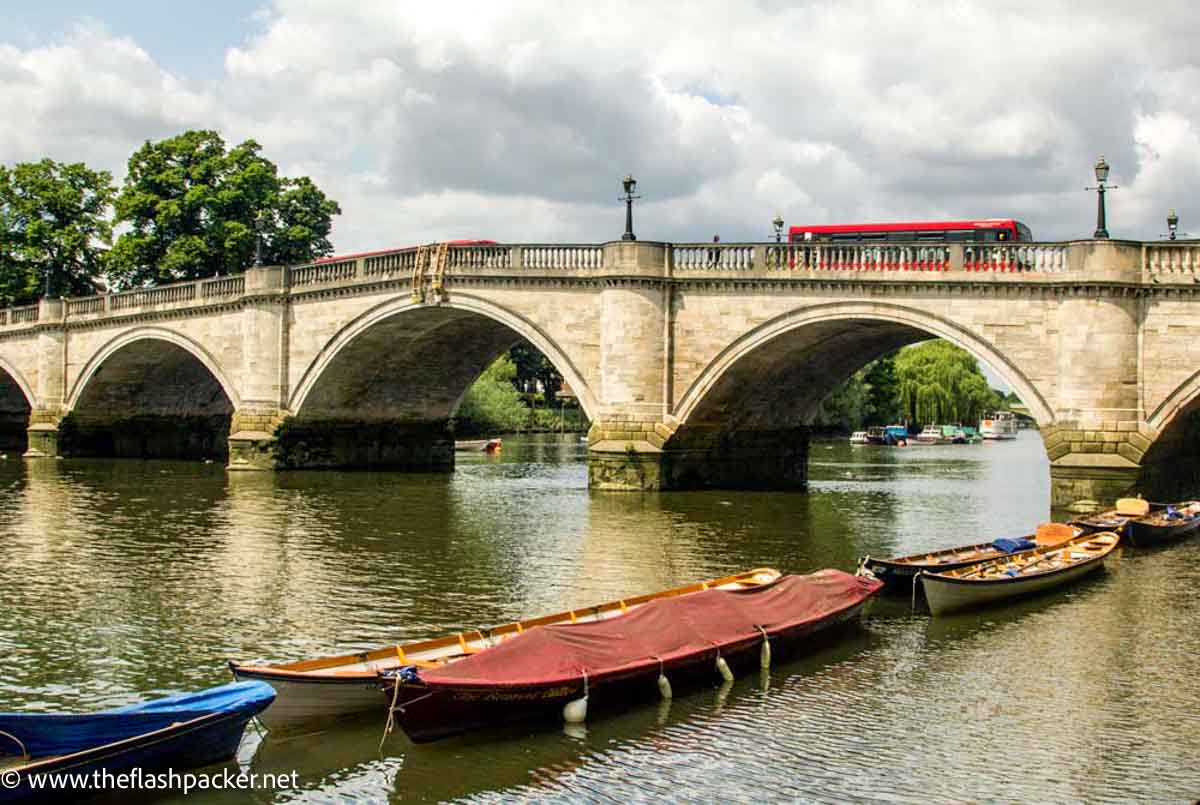
Crafted from Portland stone, its distinctive humpback shape is a result of the higher central arch, built to grant passage to taller boats.
Nearby attractions: Richmond Park and Marble Hill Park. The National Trust property, Ham House.
Closest station: Richmond Station (mainline and Tube)
Kingston Bridge
Date opened: 1828
Connecting Kingston with Hampton Court Park, Bushy Park and Hampton Wick, Kingston Bridge replaced earlier wooden bridges. Until the arrival of Putney Bridge in 1729, this was the only crossing of the River Thames between London Bridge and Staines Bridge in Surrey.
In 1745, one of the last duckings for “punishing nagging wives” took place under Kingston Bridge
Nearby attractions: The Coronation Stone. This ancient stone block located next to the Guildhall in Kingston’s High is thought to be the site of the coronation of seven Anglo-Saxon kings.
Closest station: Kingston mainline railway station
Hampton Court Bridge
Date opened: 1933
Finally, we reach Hampton Court Bridge, the most upstream Thames bridge in Greater London.
Sir Edwin Lutyens, who was responsible for The Cenotaph and the Metropolitan Cathedral in Liverpool (amongst many other architectural gems), had a hand in the design of Hampton Court Bridge. Constructed in concrete, this road bridge is faced in white Portland stone and red brick to harmonise with the style of Hampton Court Palace.
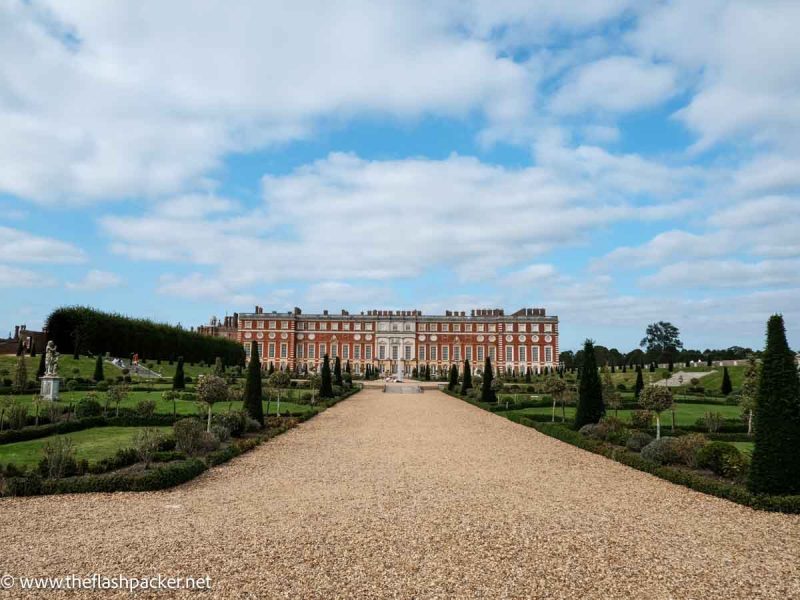
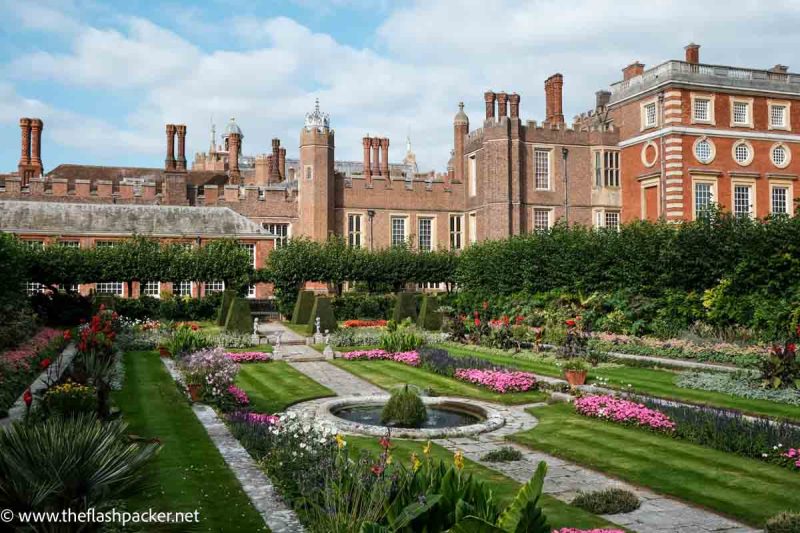
Nearby attractions: The Grade I listed Hampton Court Palace which was one of Henry VIII’s favourite royal residences.
Closest station: Hampton Court Palace mainline railway station
Other London Bridges
For completeness, from east to west, here are the remaining Thames bridges in London:
- Cannon Street Railway Bridge
- Blackfriars Bridge
- Grosvenor Railway Bridge
- Battersea Railway Bridge
- Wandsworth Bridge
- Fulham Railway Bridge & Footbridge
- Barnes Railway Bridge & Footbridge
- Kew Railway Bridge
- Richmond Lock & Footbridge
- Richmond Railway Bridge
- Teddington Lock Footbridges
- Kingston Railway Bridge
The Best Ways to See London’s Bridges
On foot
The best way to see these bridges is on foot, providing opportunities for multiple great days out in London. I recommend grouping bridges and visiting them on your very own walking tour, an ideal activity if you are a solo traveller in London.
For example; without stops, walking from Tower Bridge to Westminster Bridge will take you no more than one hour and will take in ten of these bridges. Not bad going.
The next section from Westminster Bridge to Battersea Bridge is around the same distance, taking in a further five London bridges.
As you venture further upstream, the bridges become more spaced apart but walking along this stretch of the Thames on a fine day is spectacular. The walk from Putney Bridge to Kew along the Thames Path is hard to beat.
When it comes to the most westerly bridges, I recommend combining Kingston and Hampton Court Bridges with a visit to Bushy Park and Hampton Court Palace.
By riverboat
A river cruise is a more leisurely option and will offer a different perspective.
City Cruises, travelling between Westminster and Greenwich, depart every 40-50 minutes from four piers: Westminster, London Eye, Tower and Greenwich Pier.
I have joined one of these river cruises in the past and they are fun and relaxing. An audio commentary is included and there is a bar on board.
Another option is to catch the Uber Boat by Thames Clipper. Running services between Royal Woolwich and Putney, this river commuter service is far more extensive than that of City Cruises.
It serves 24 piers and the ticket prices depend on how far you are travelling. One-day passes are available.
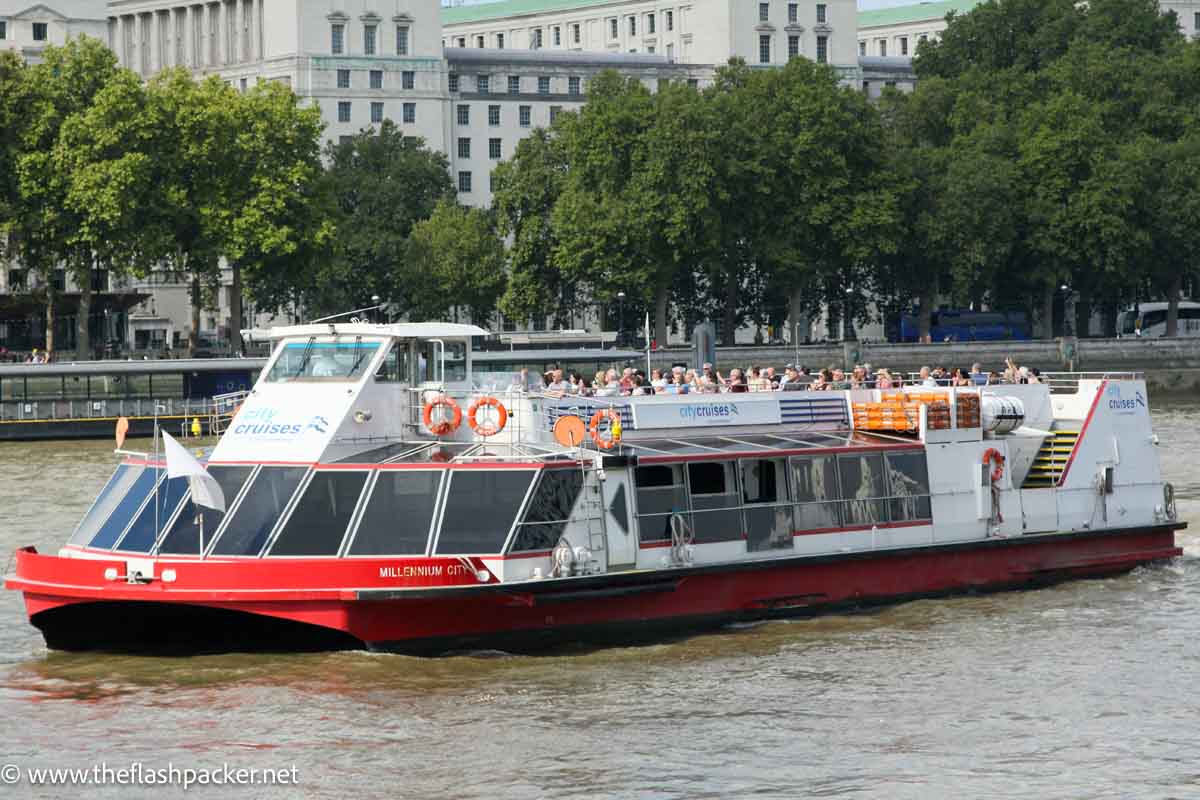
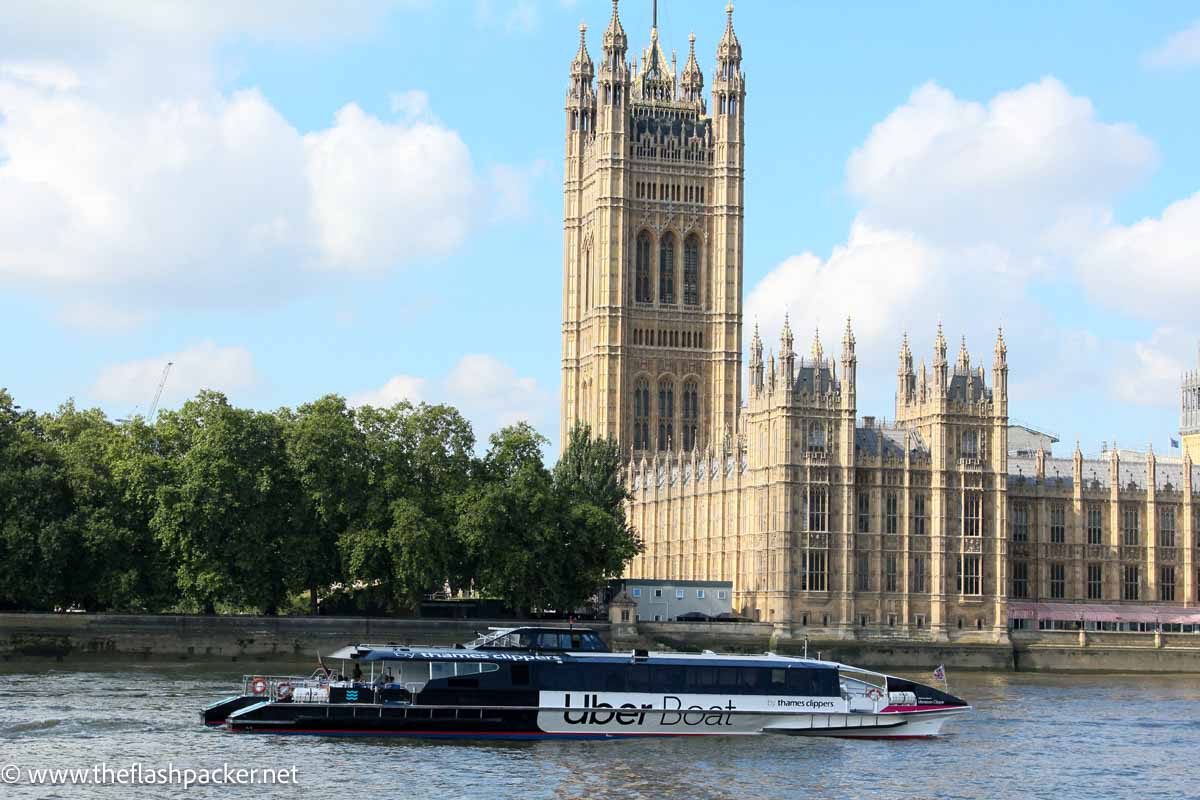

About Bridget
Bridget Coleman is a Londoner and has been a passionate traveller for more than 30 years. She has visited 70+ countries, most as a solo traveller.
Articles on this site reflect her first-hand experiences.
To get in touch, email her at hello@theflashpacker.net or follow her on social media.

